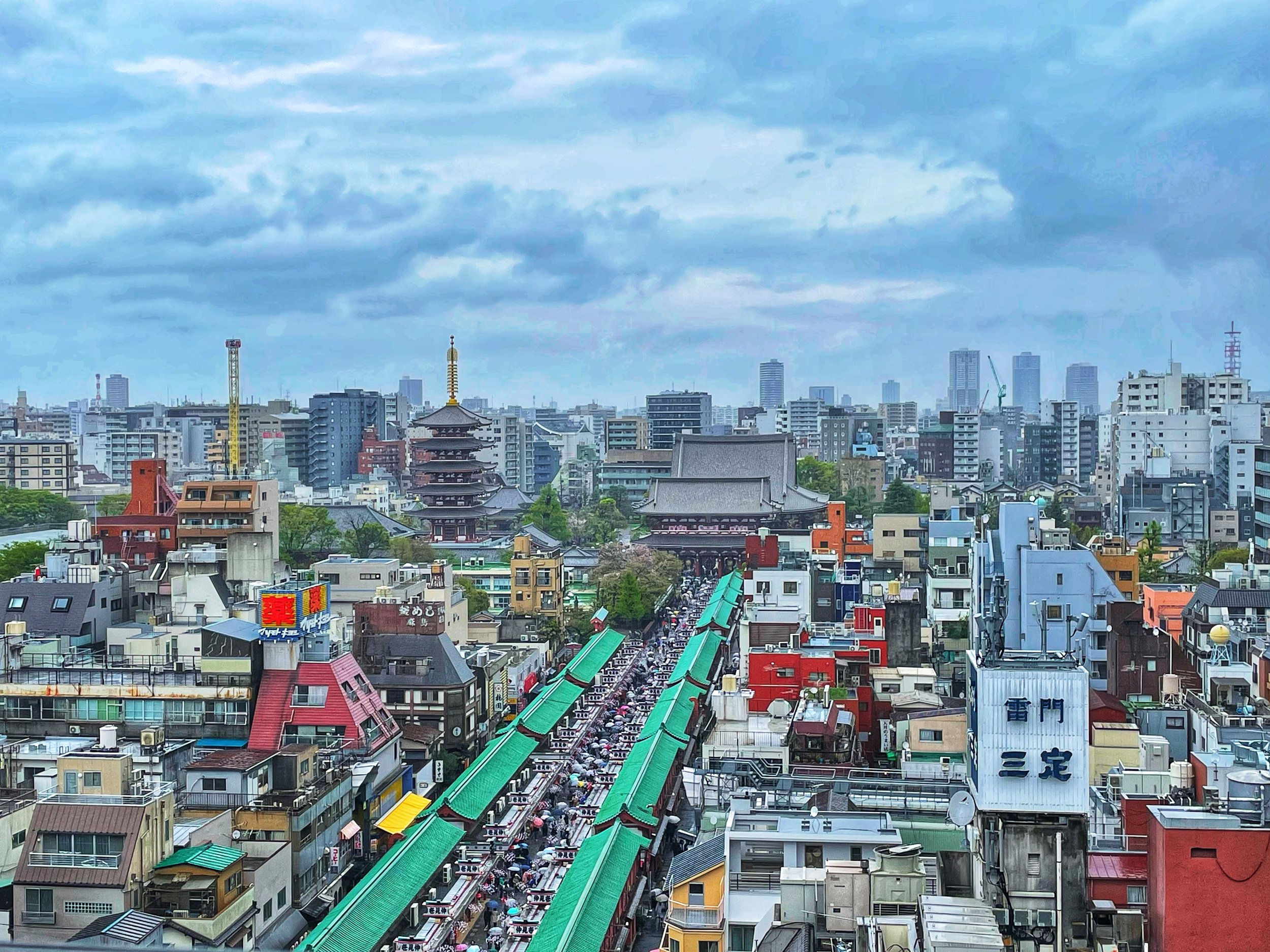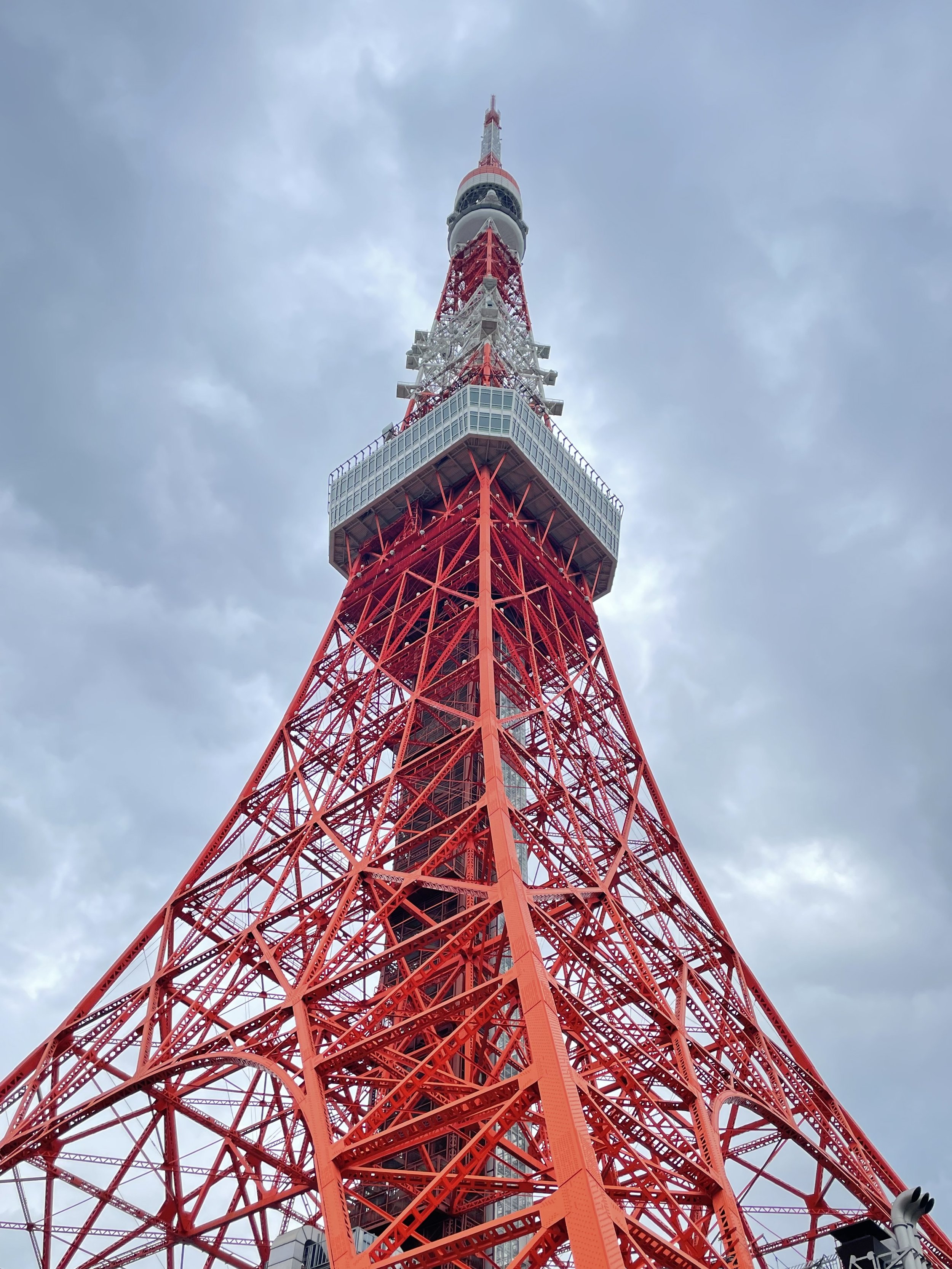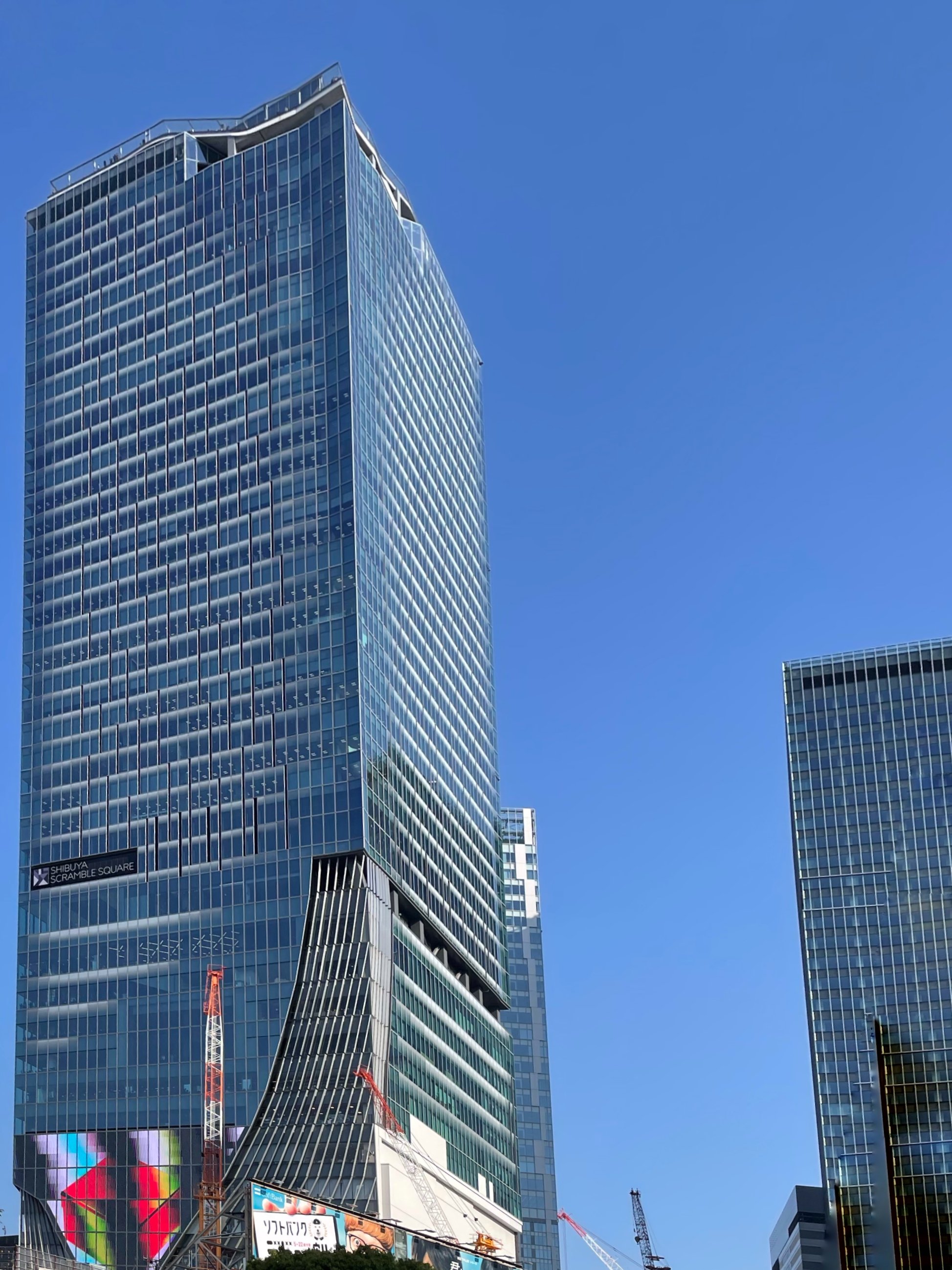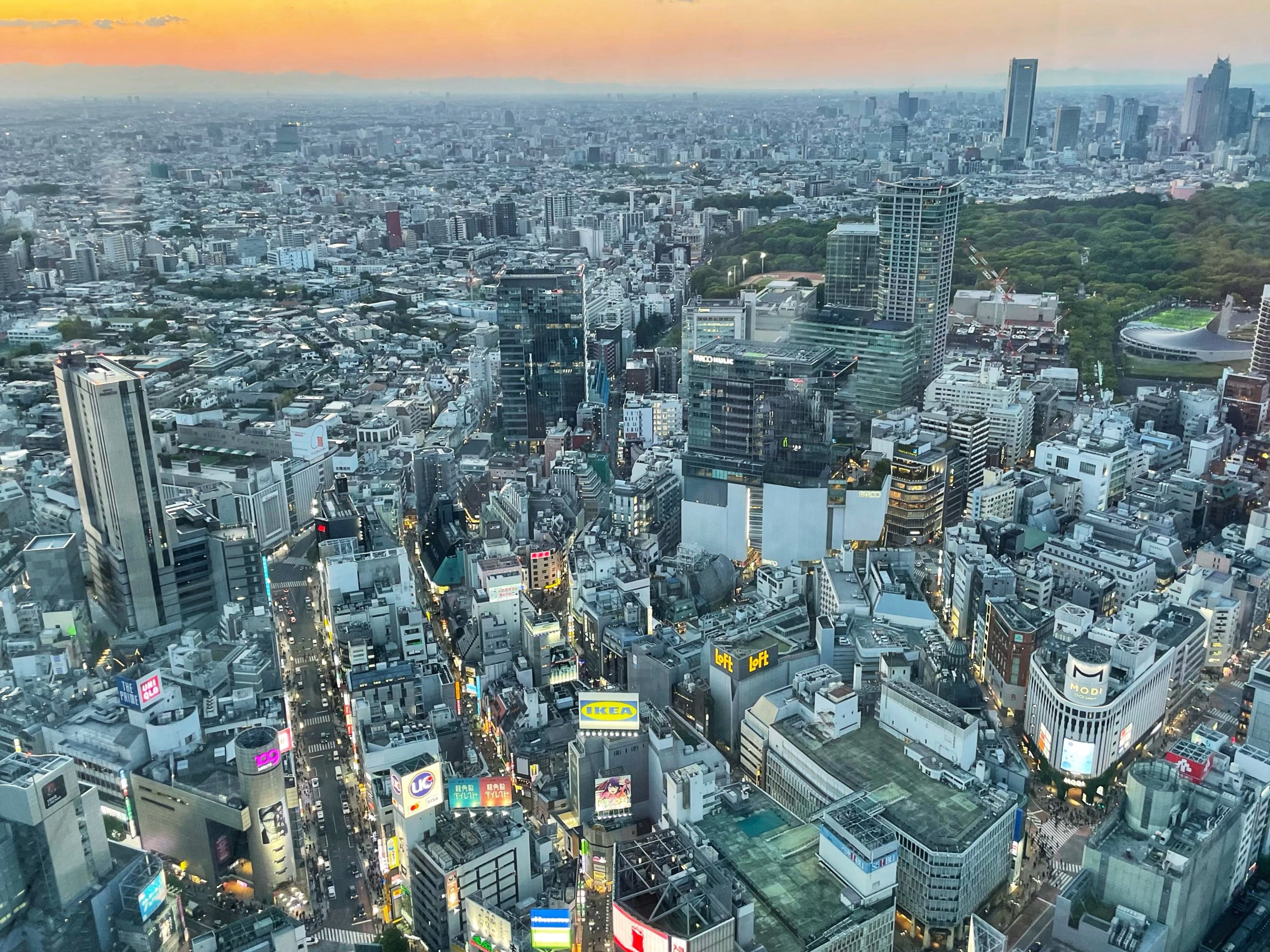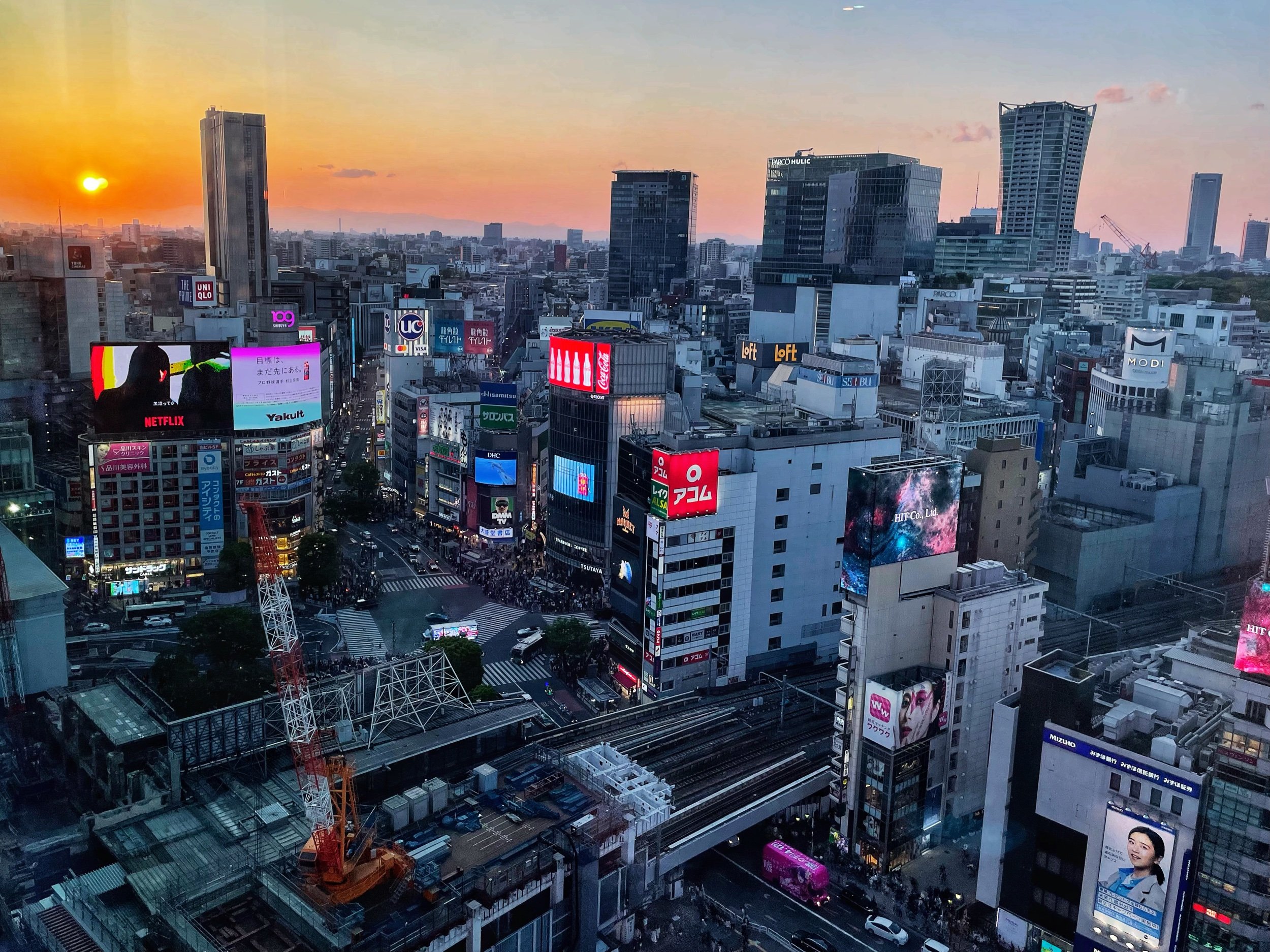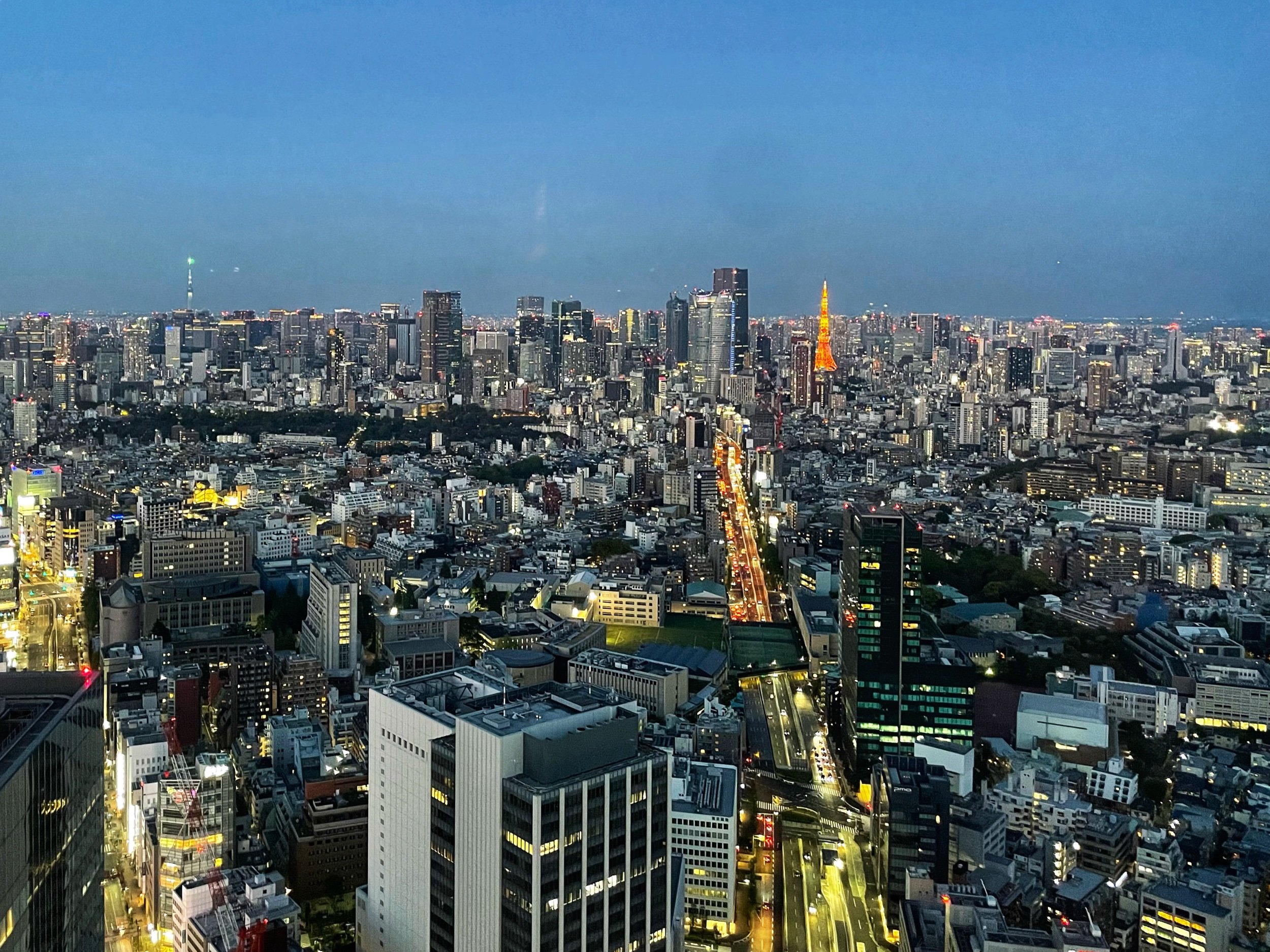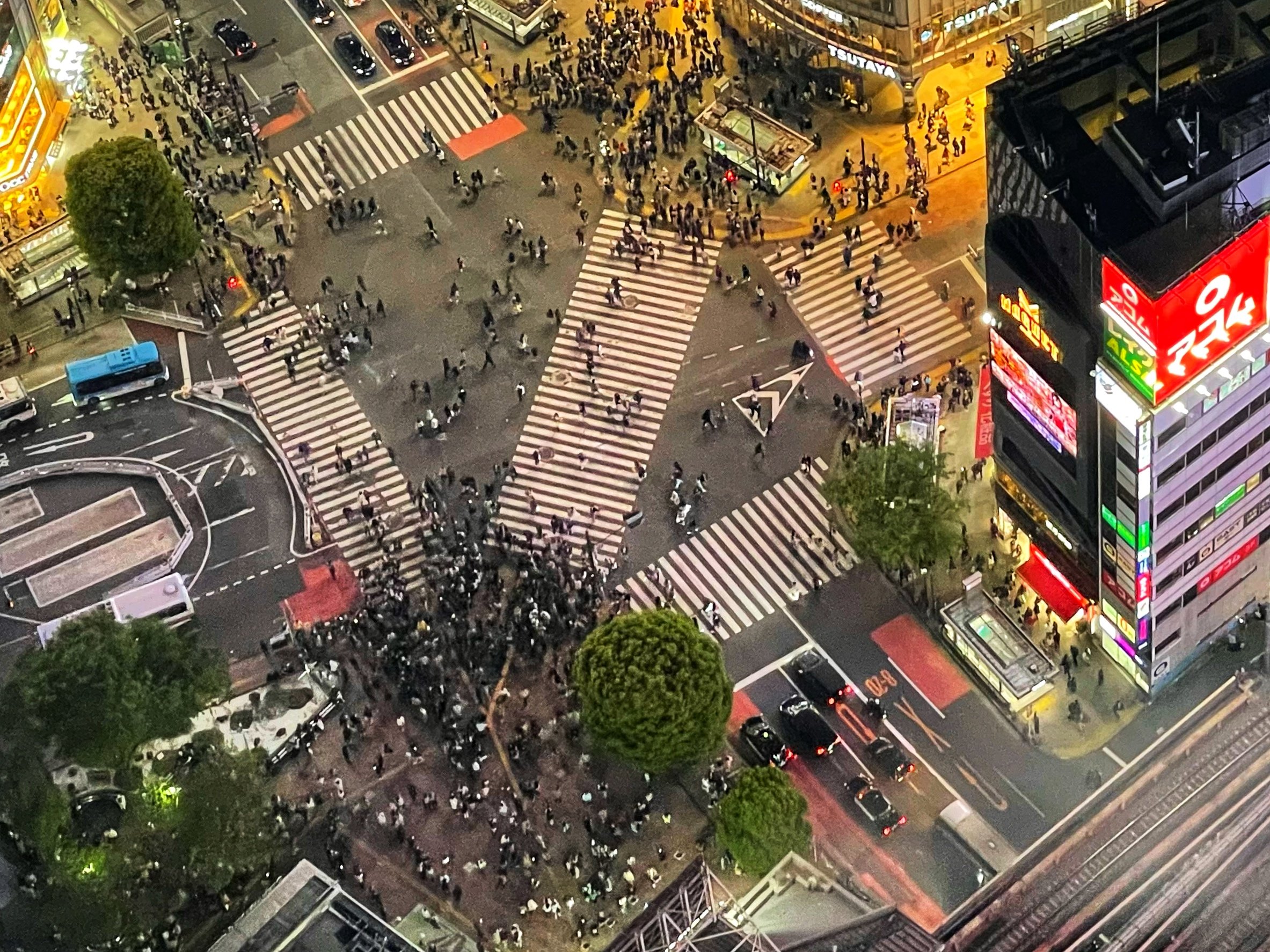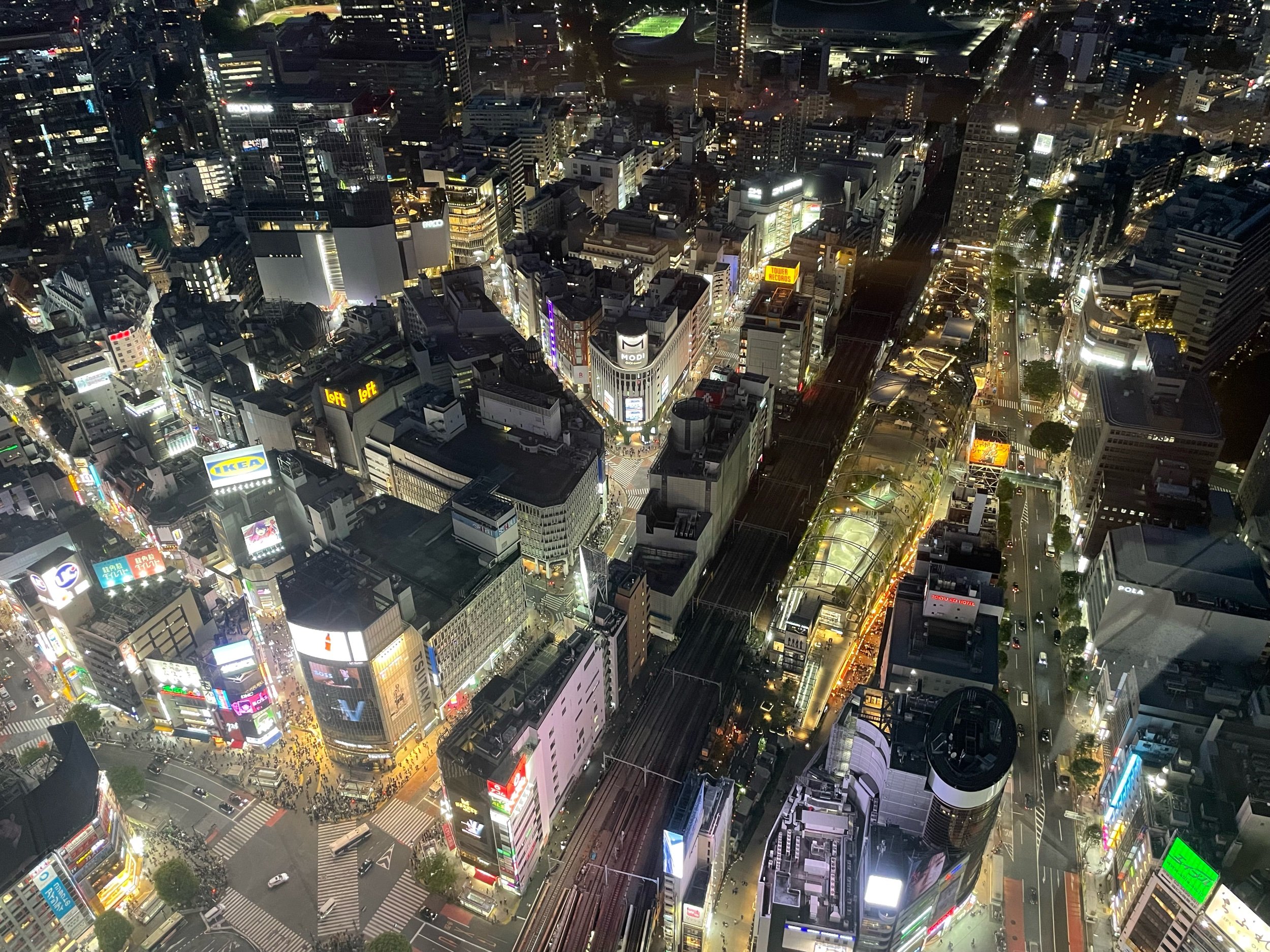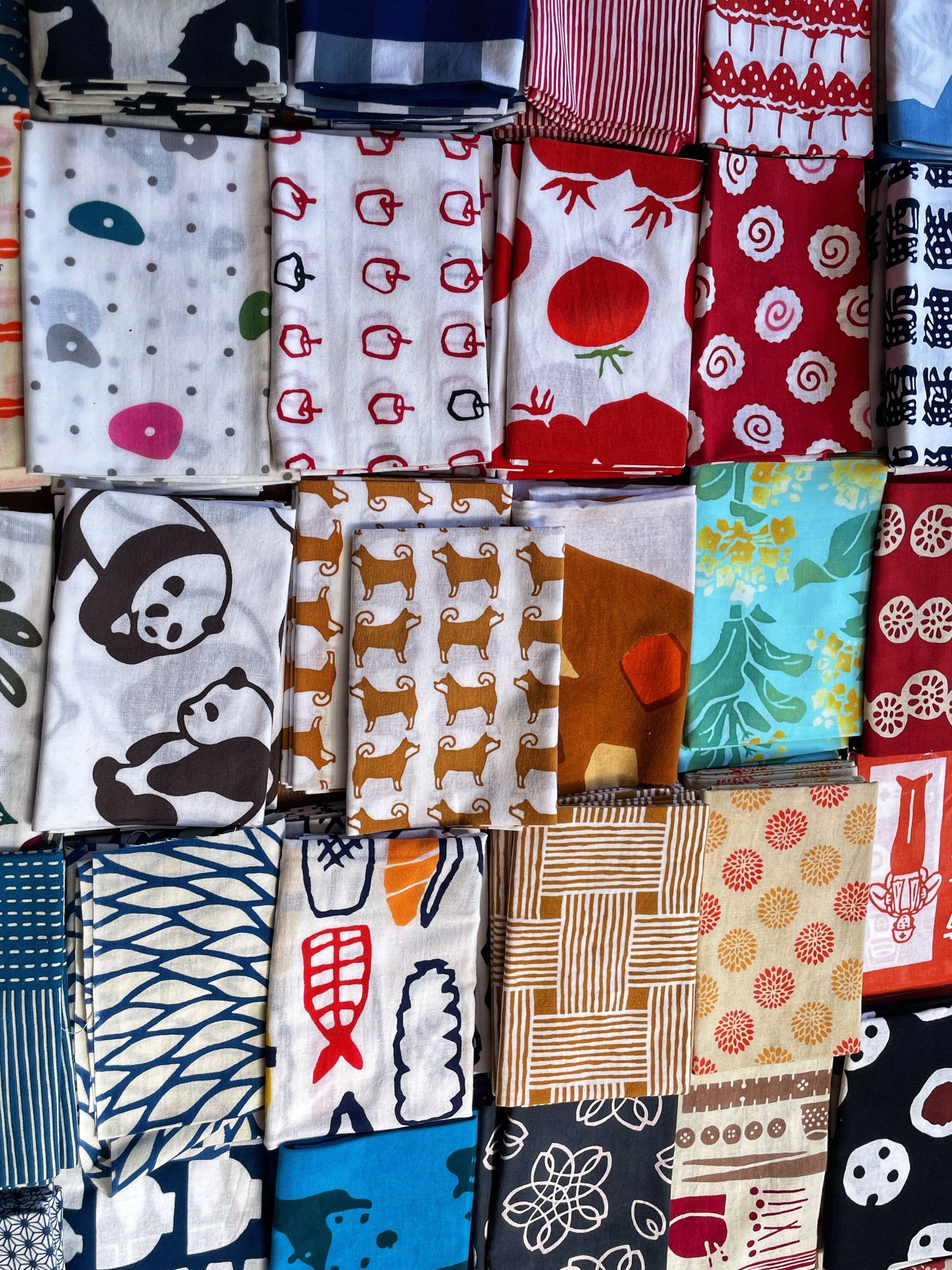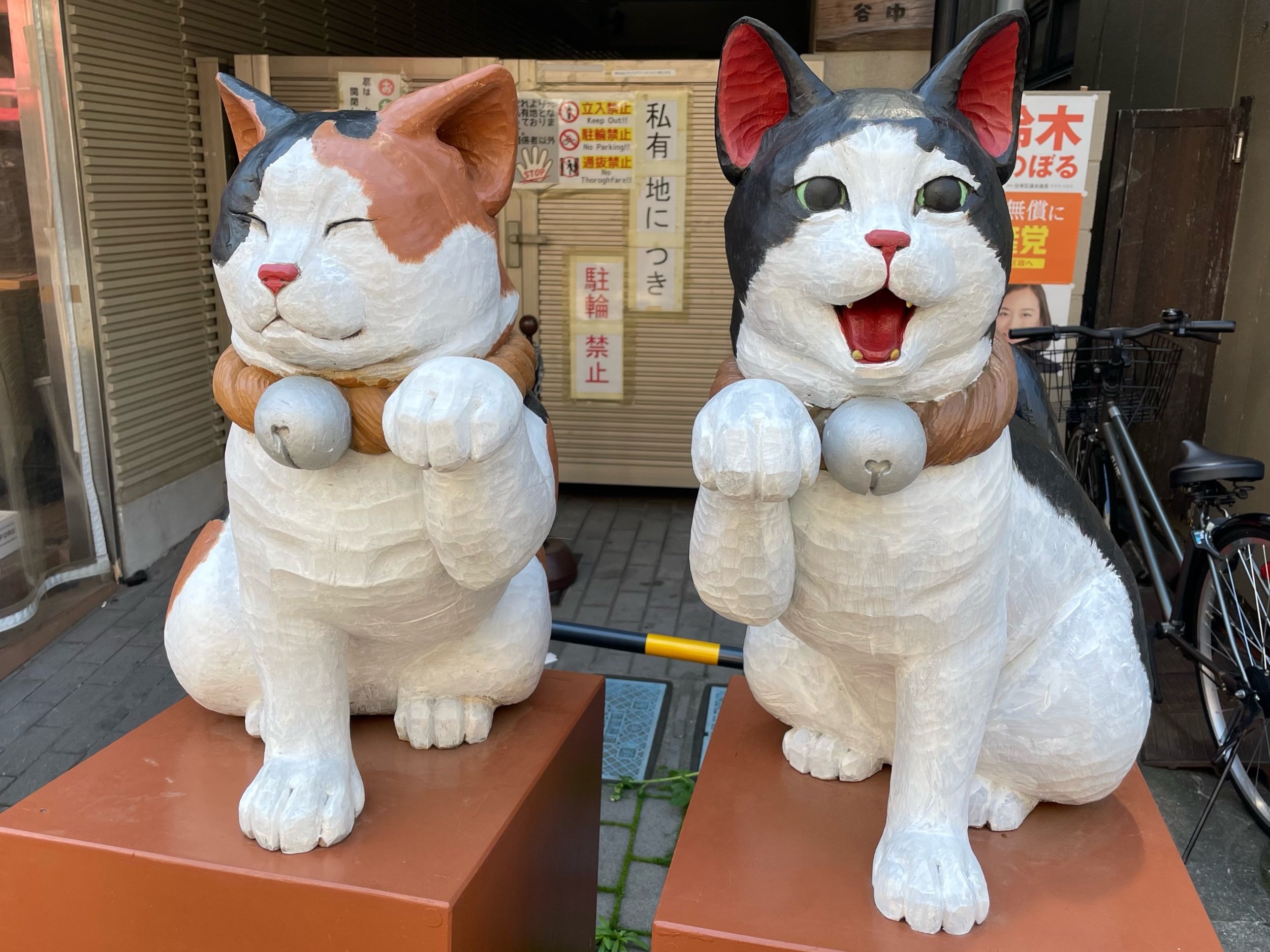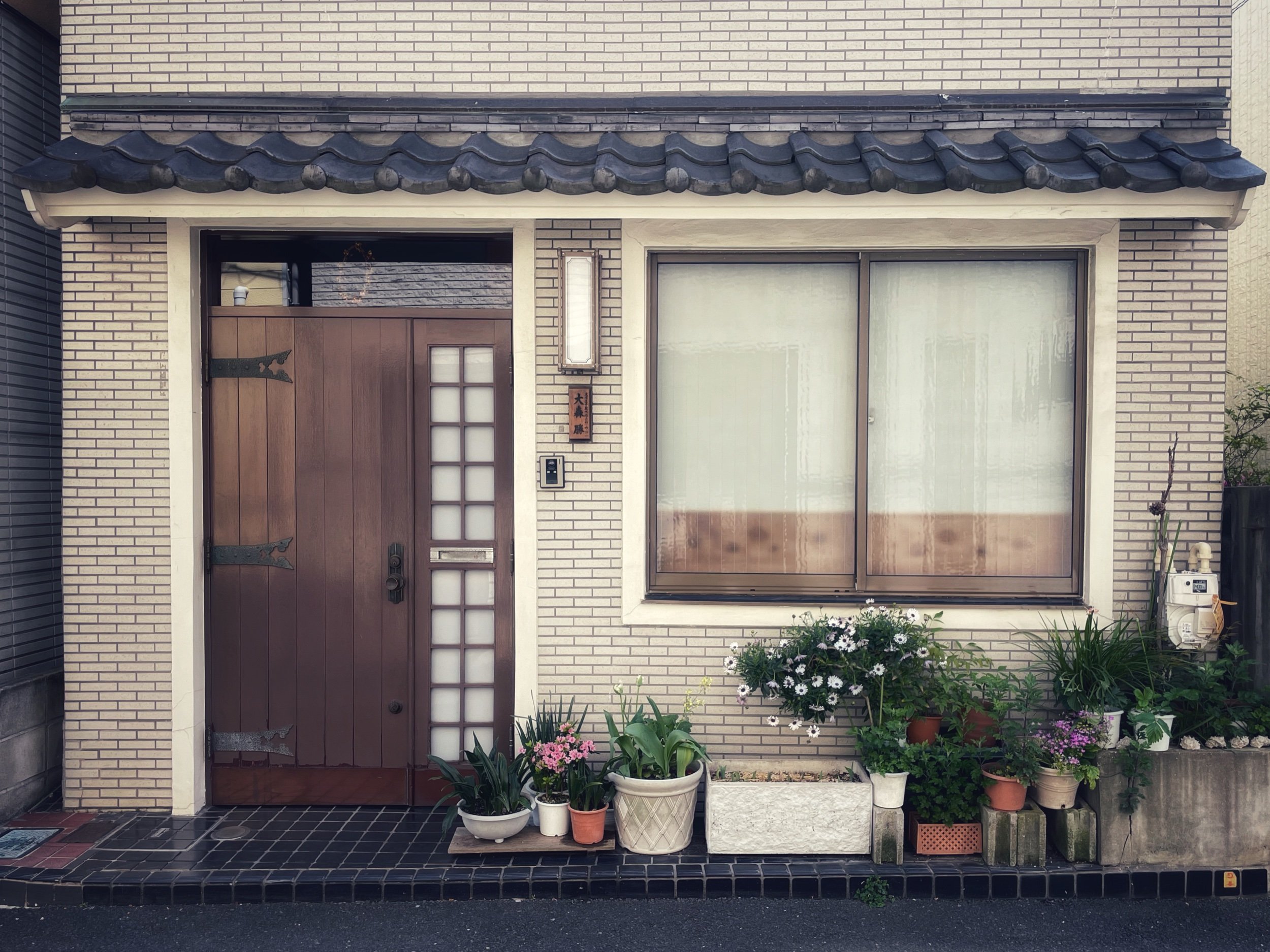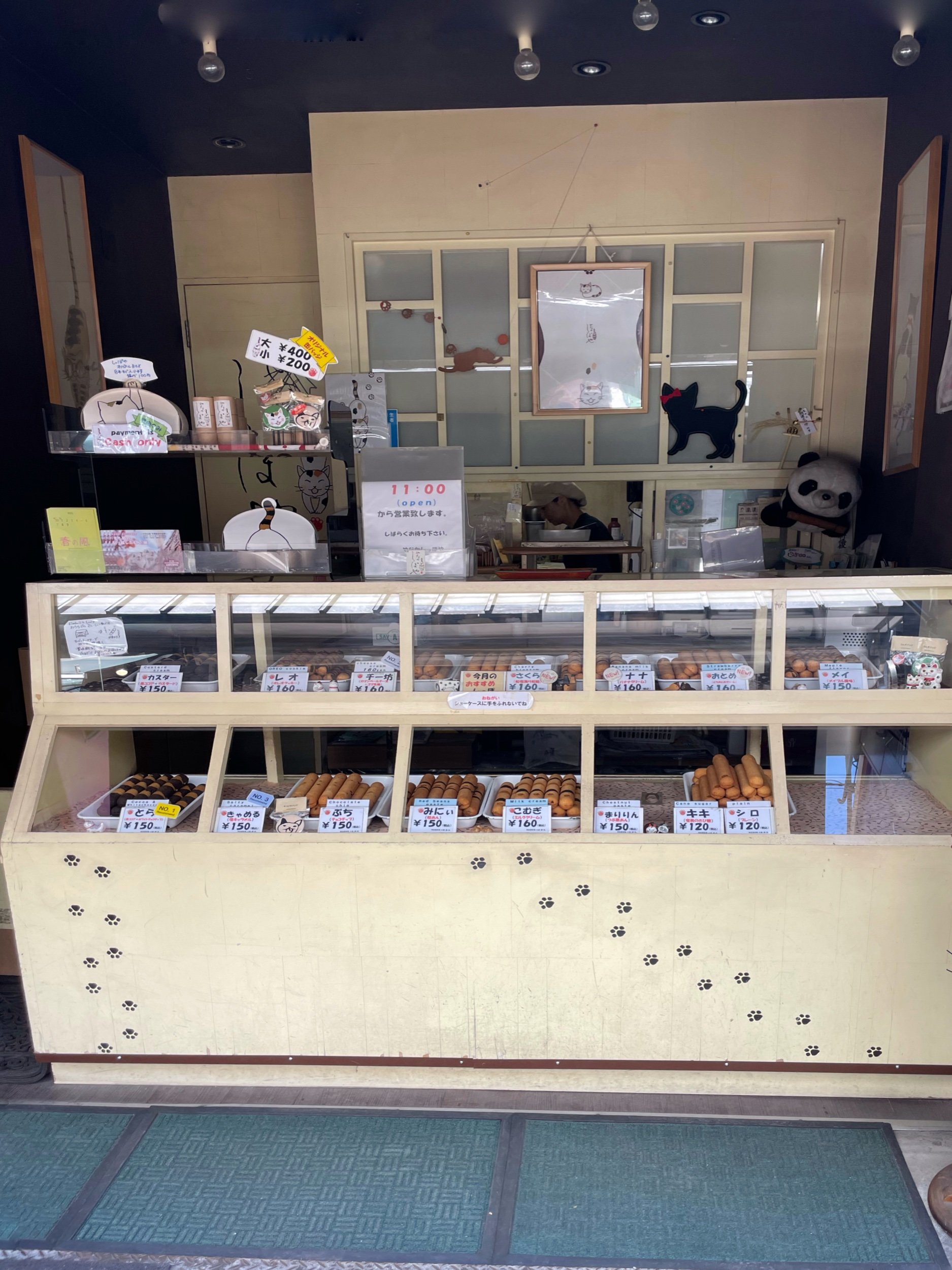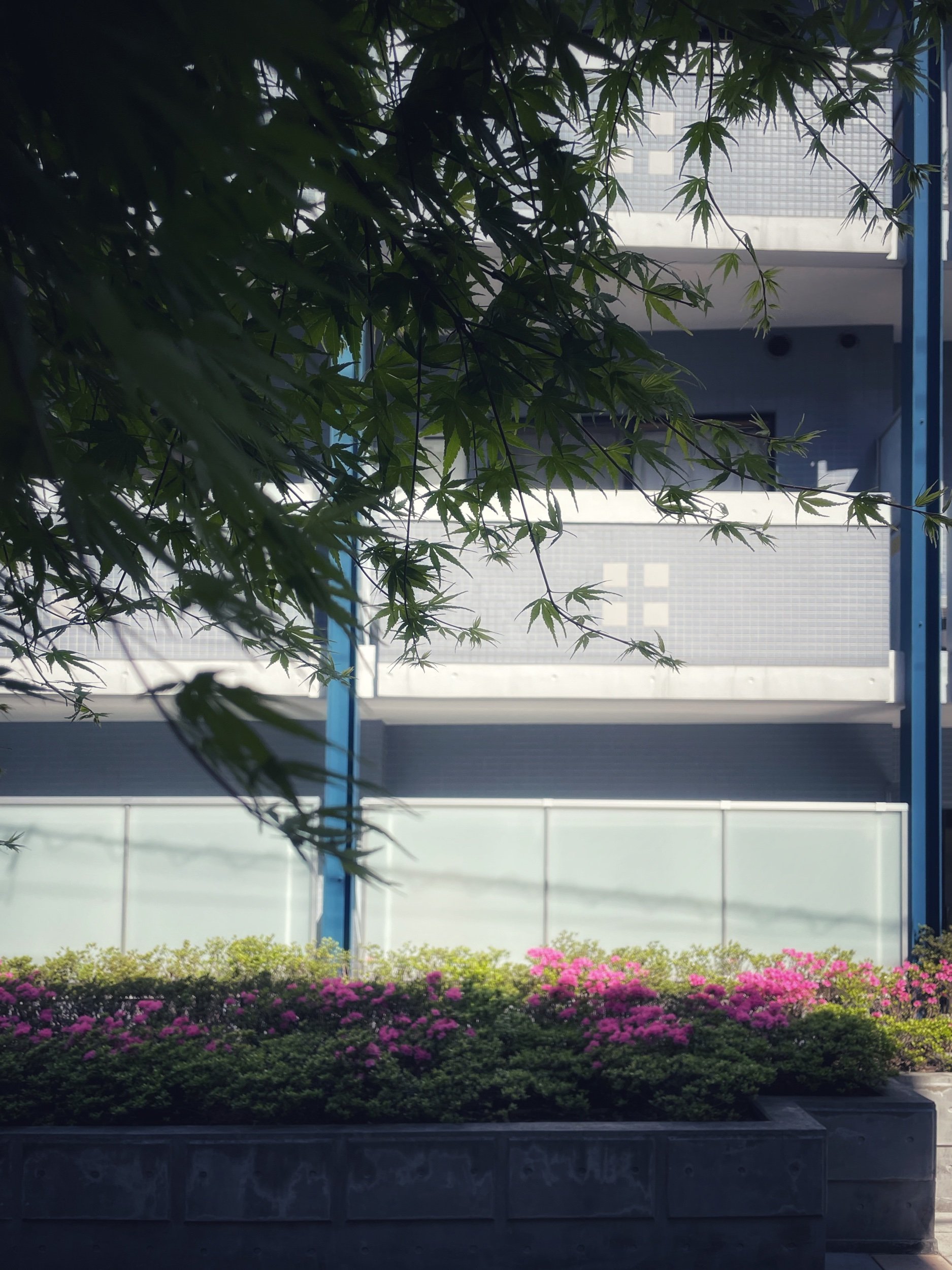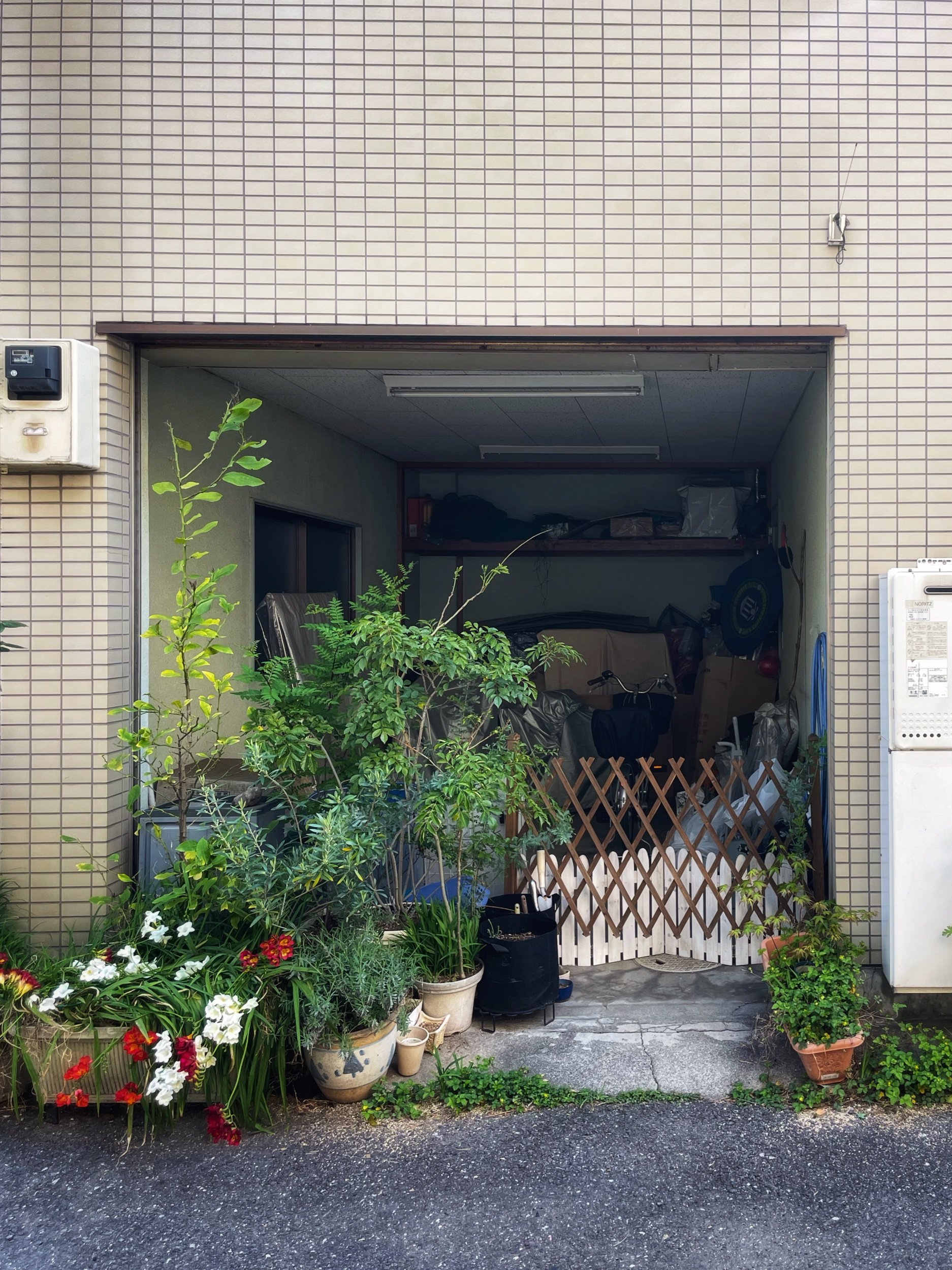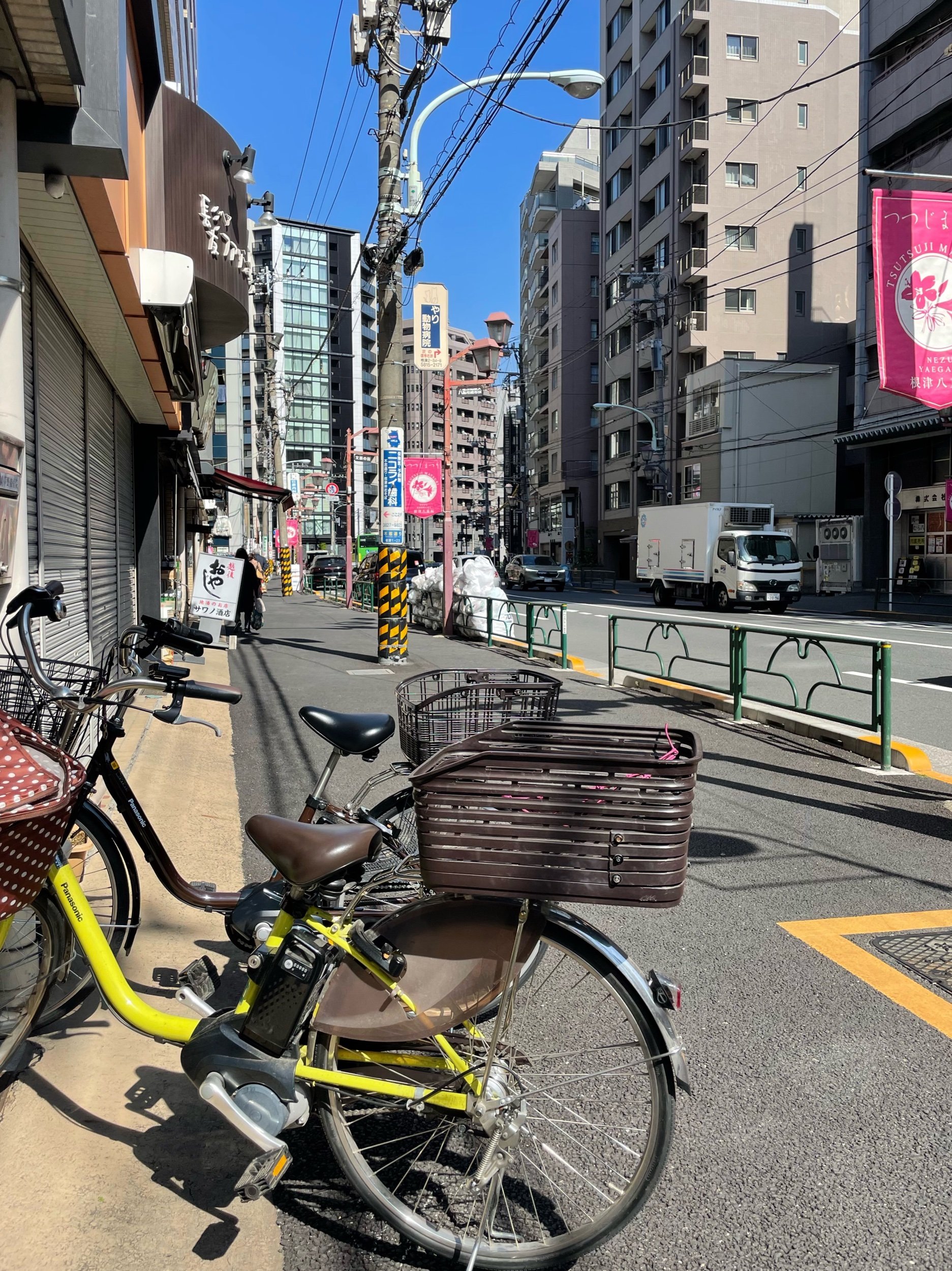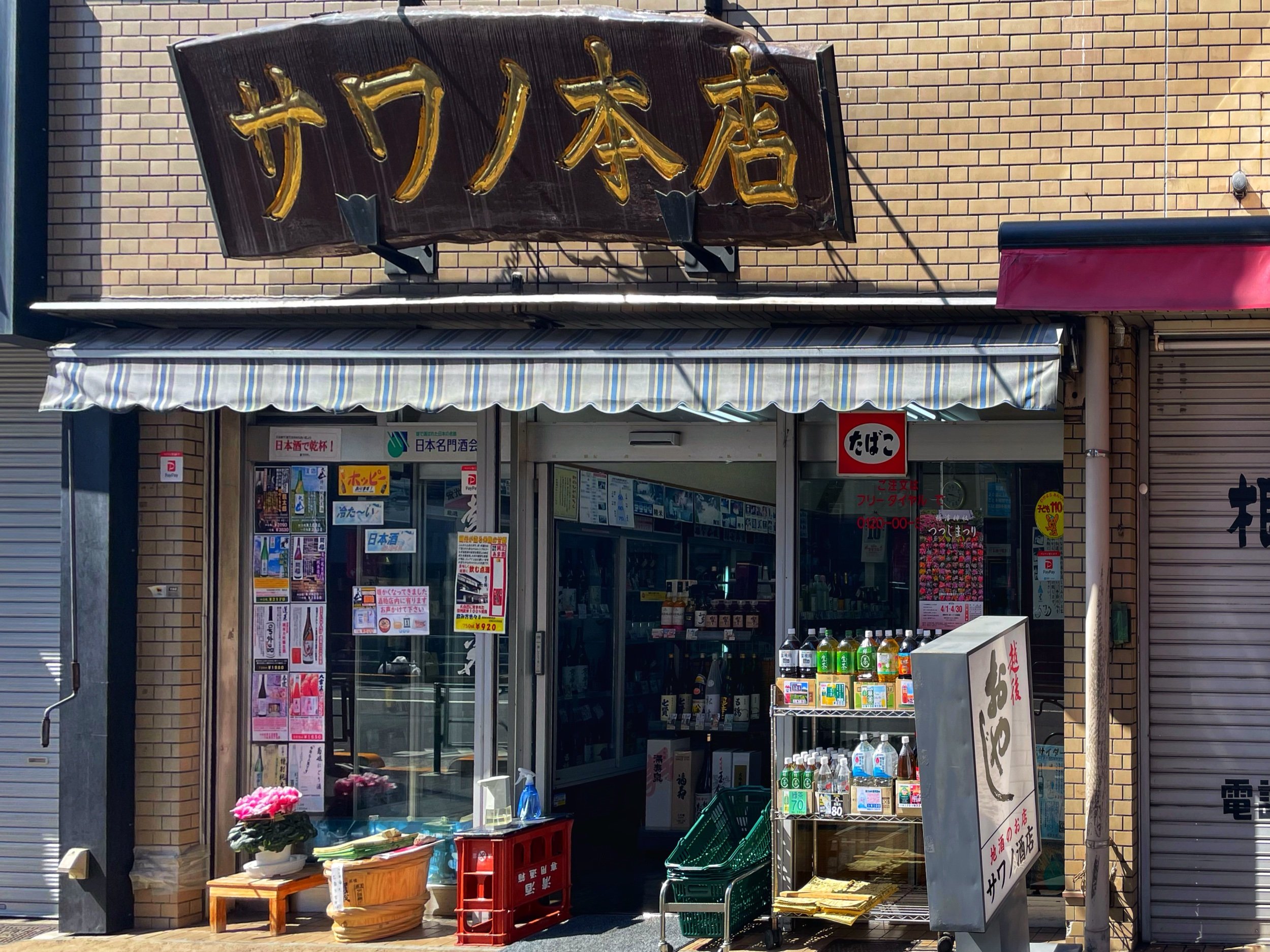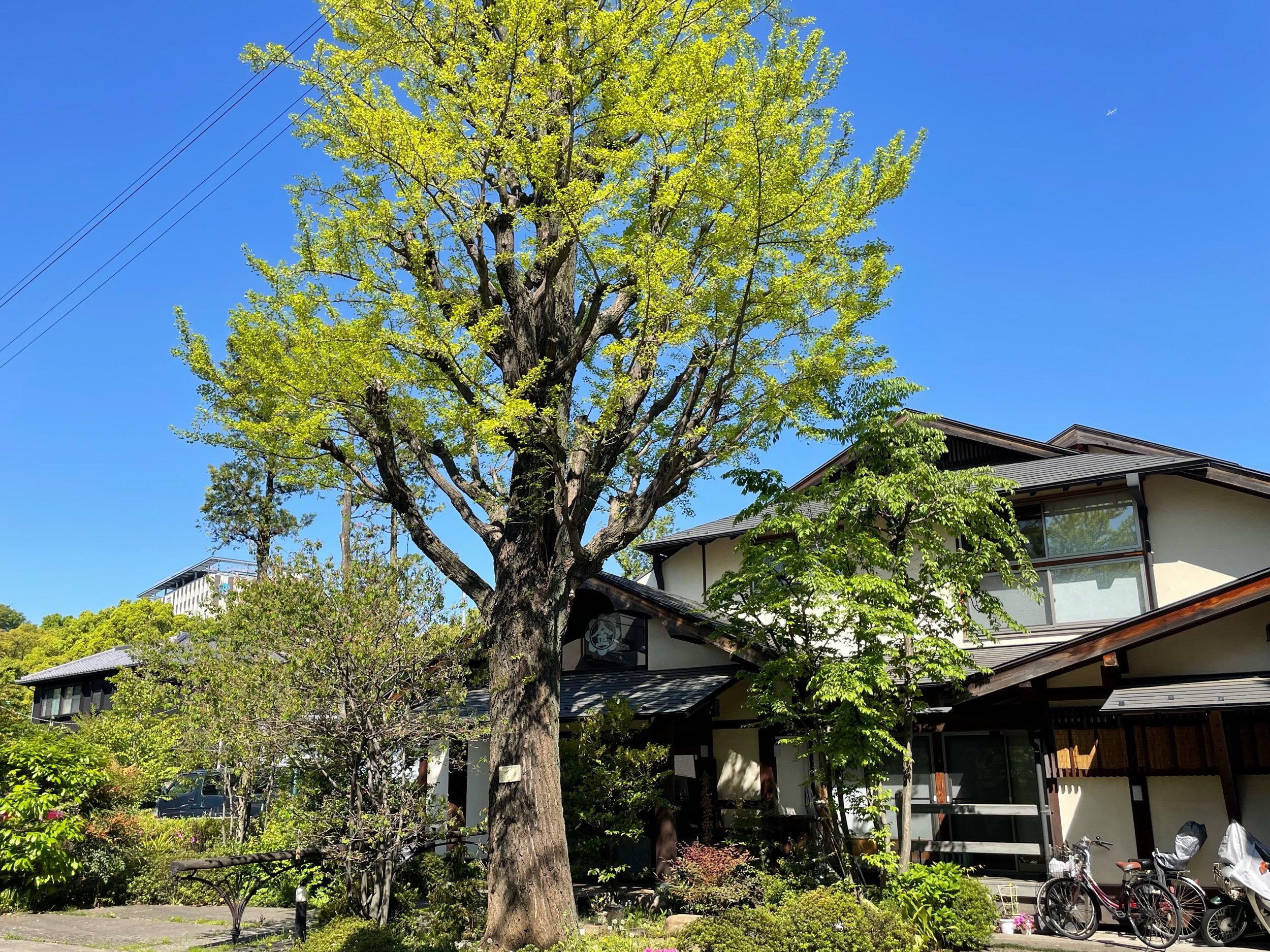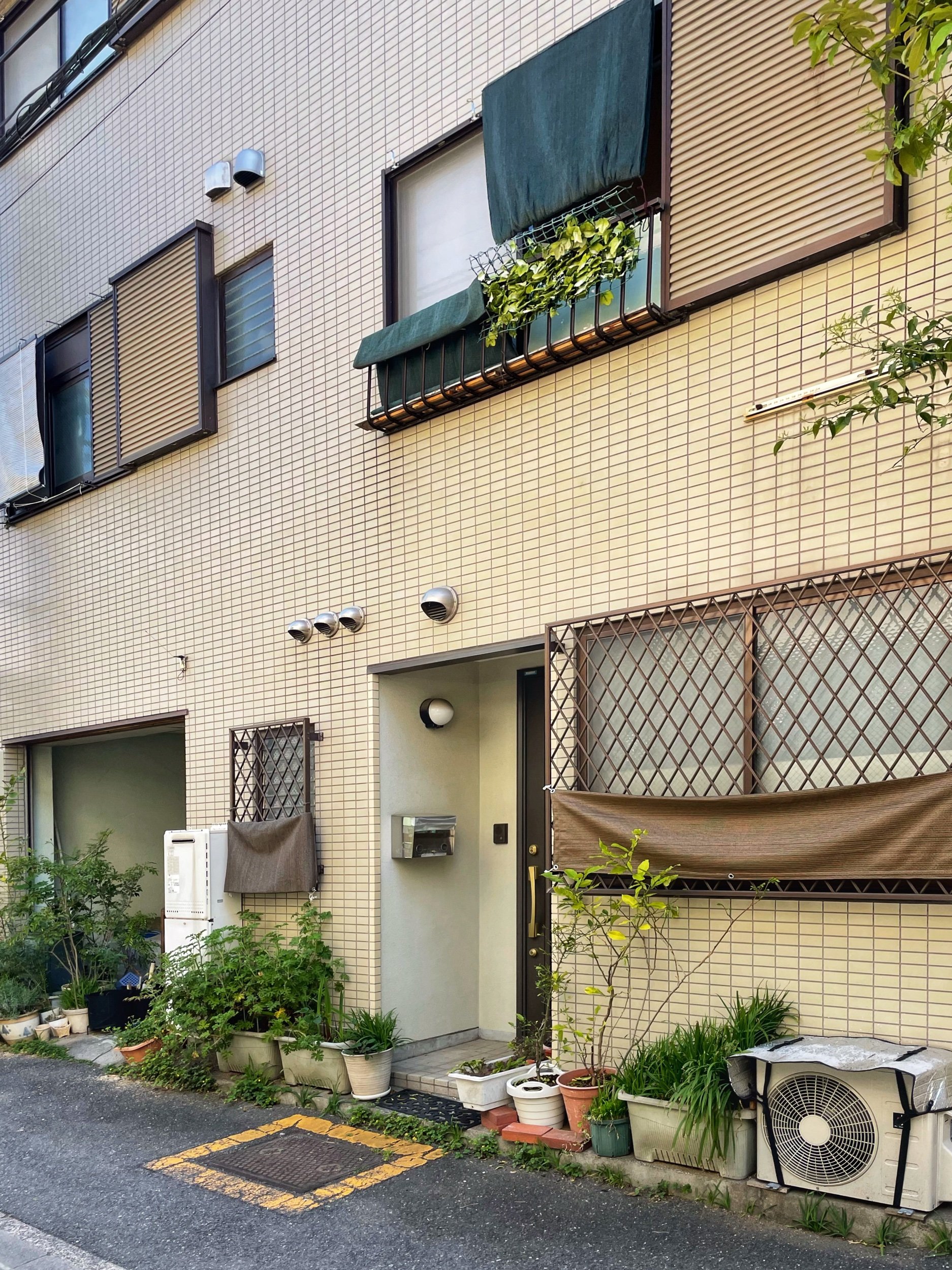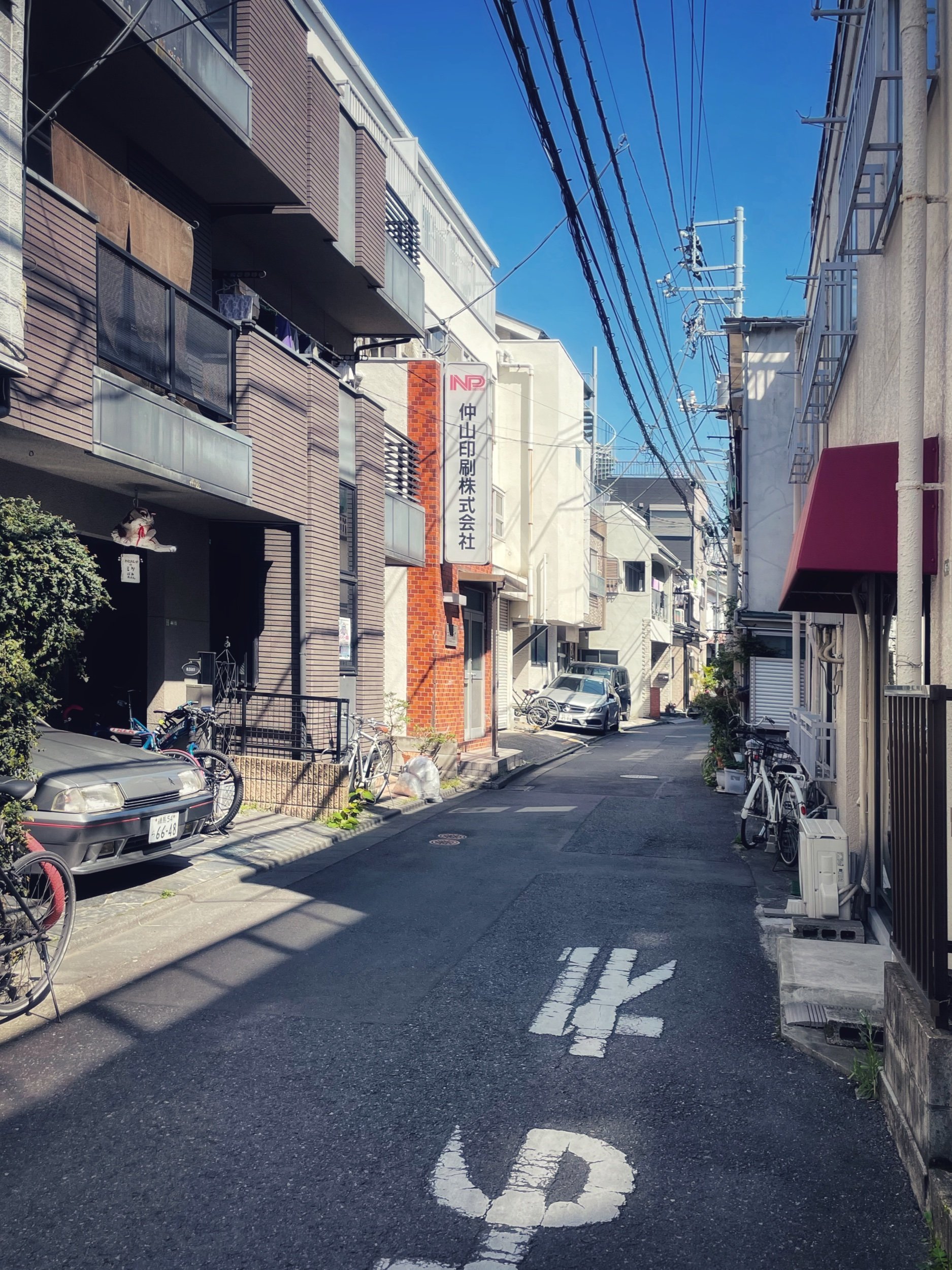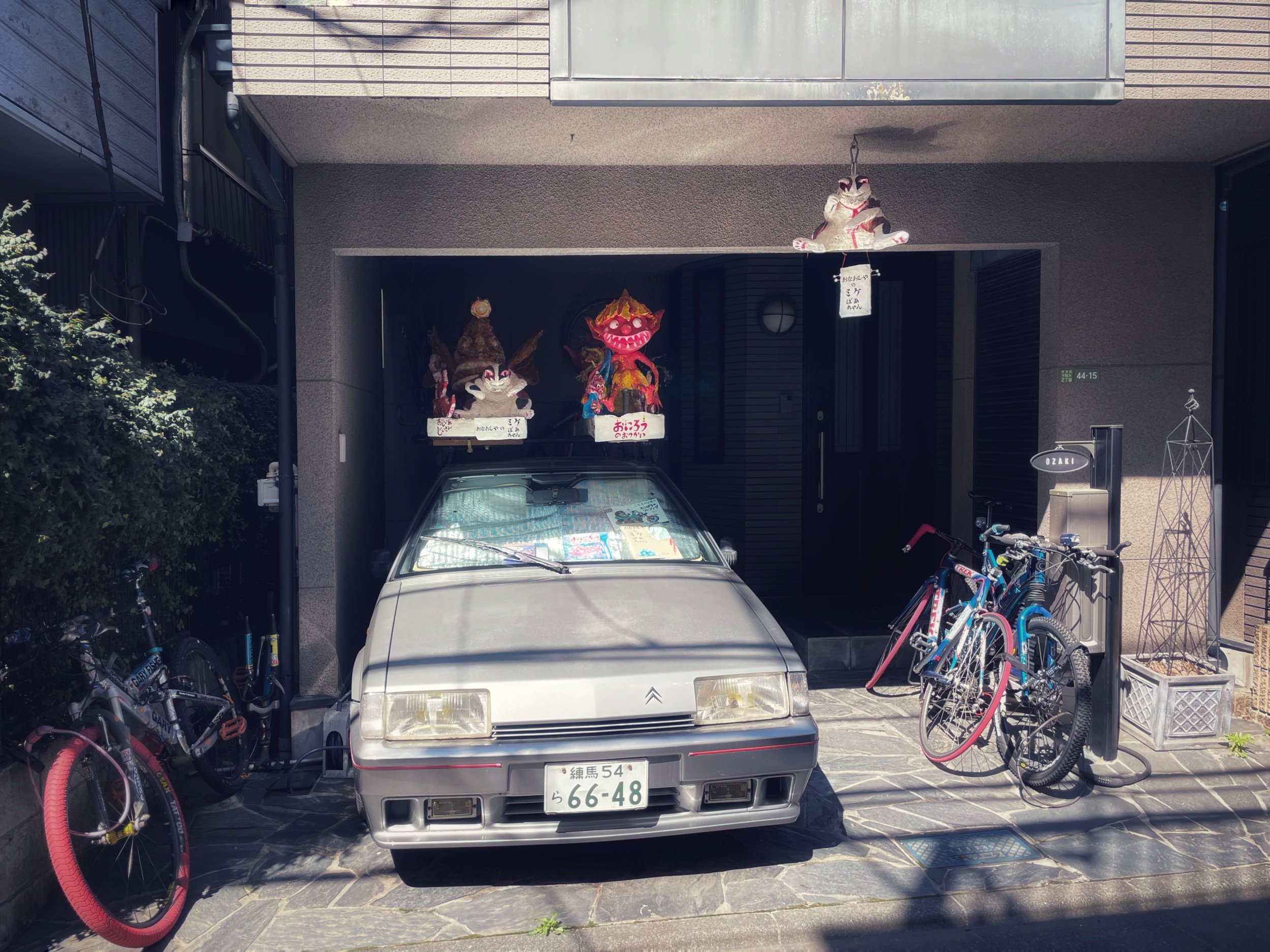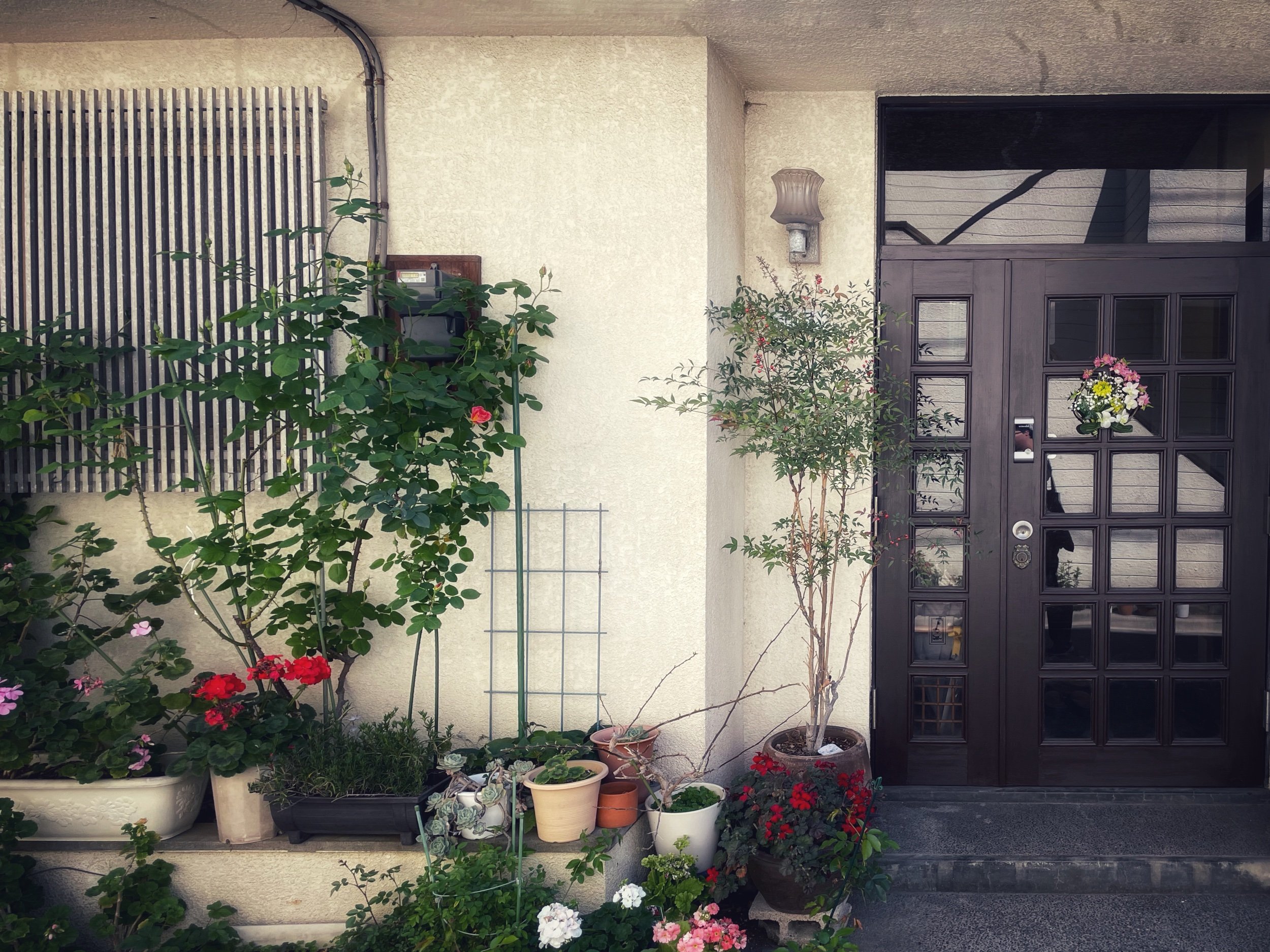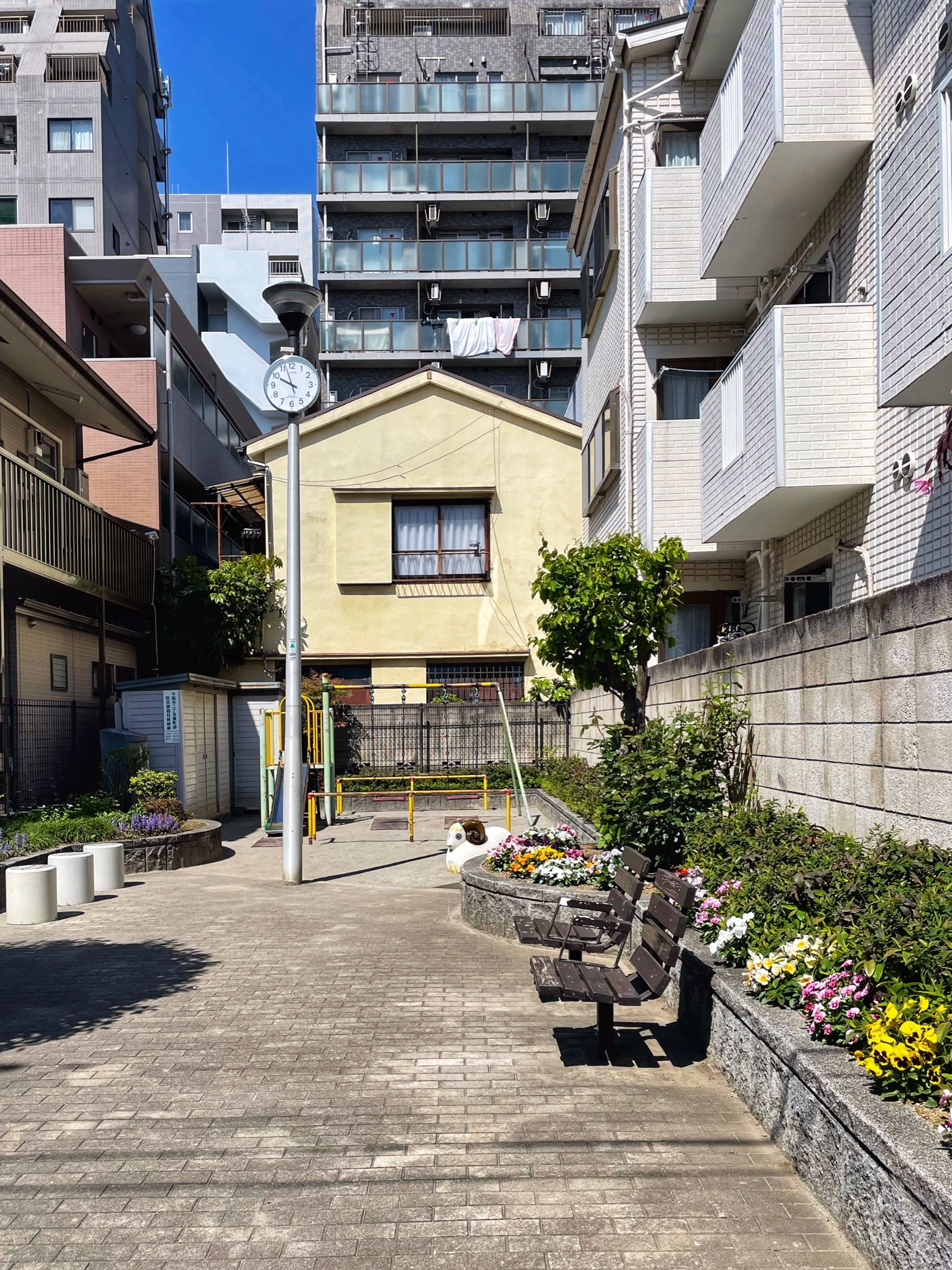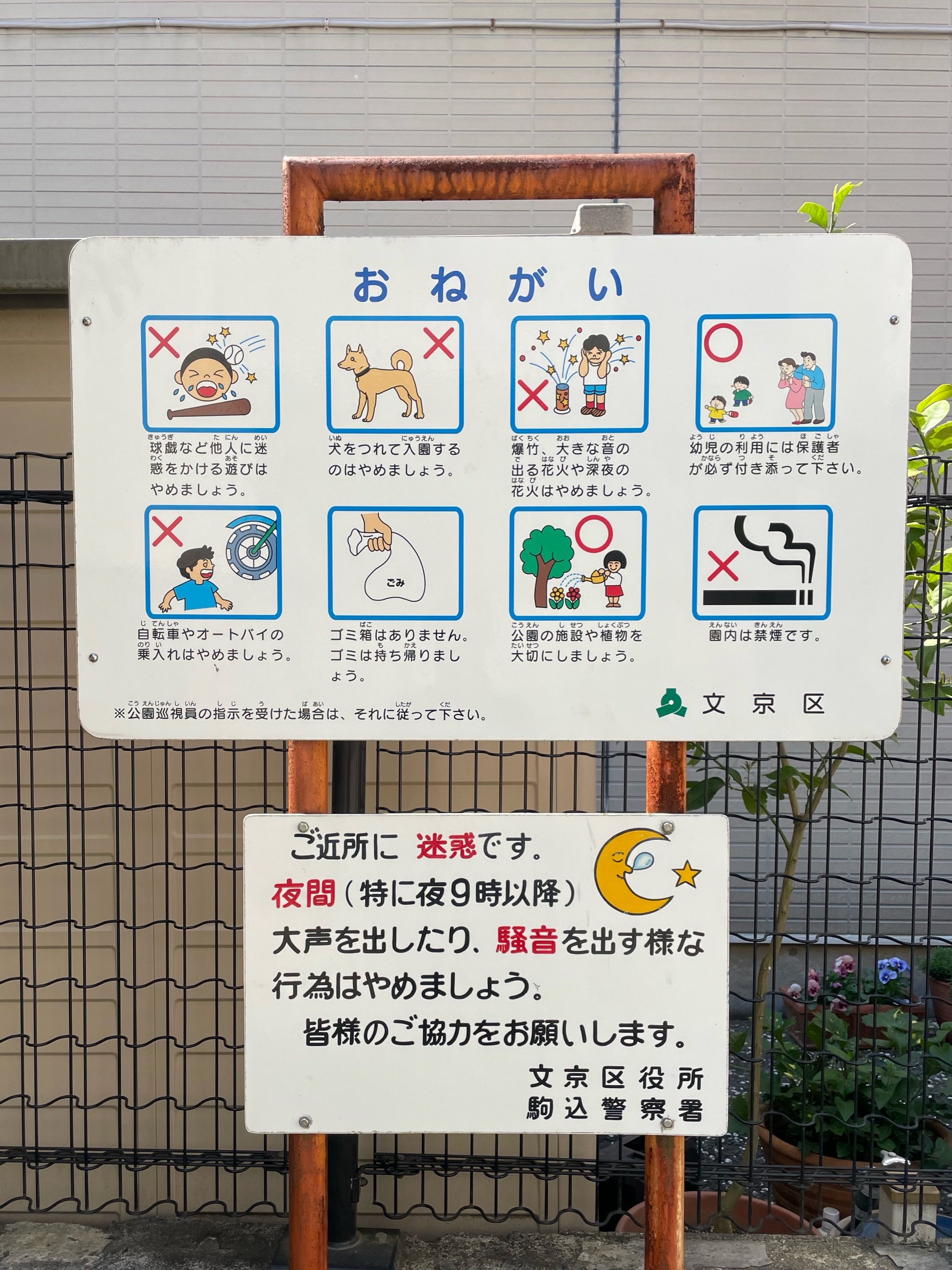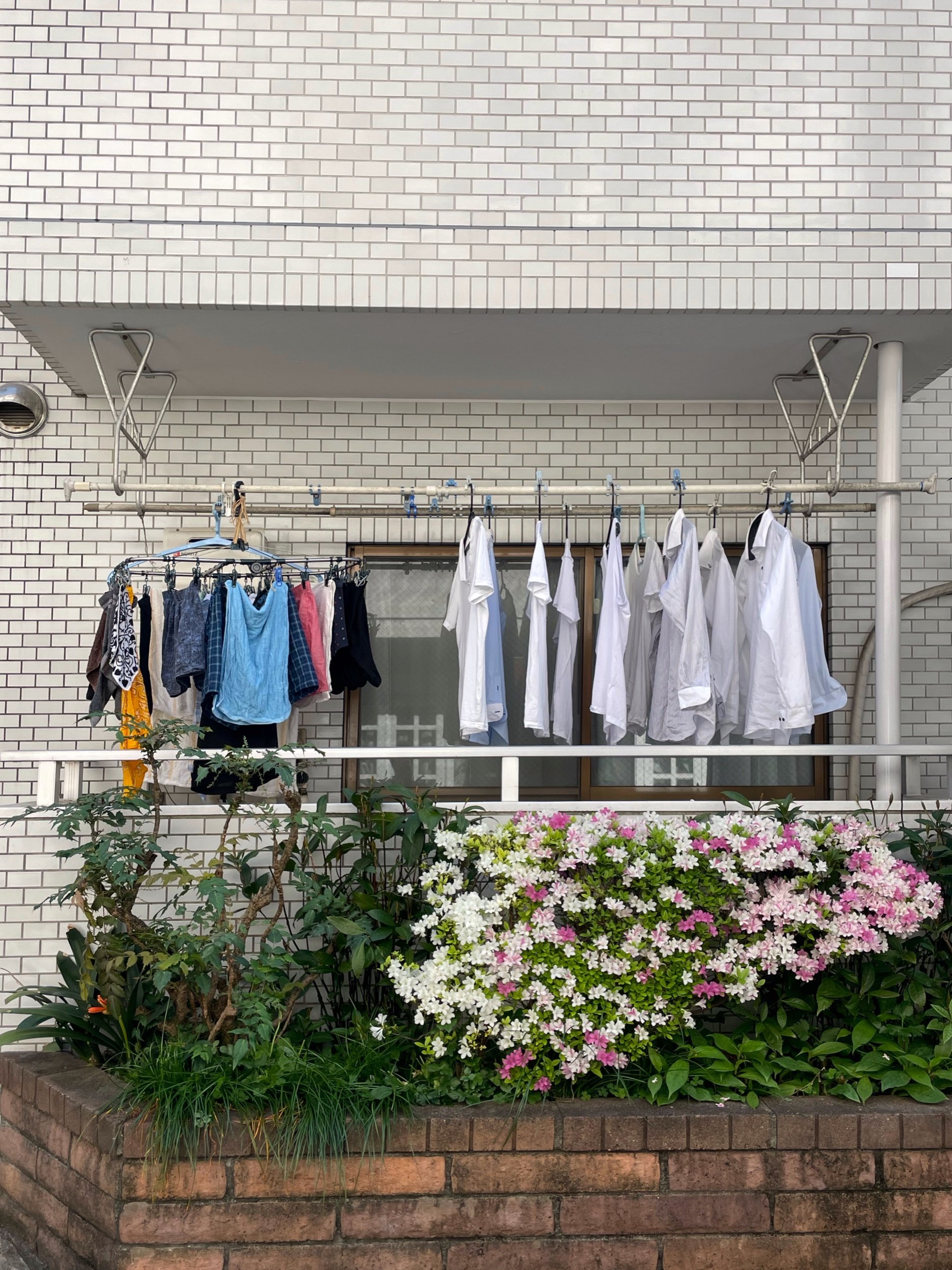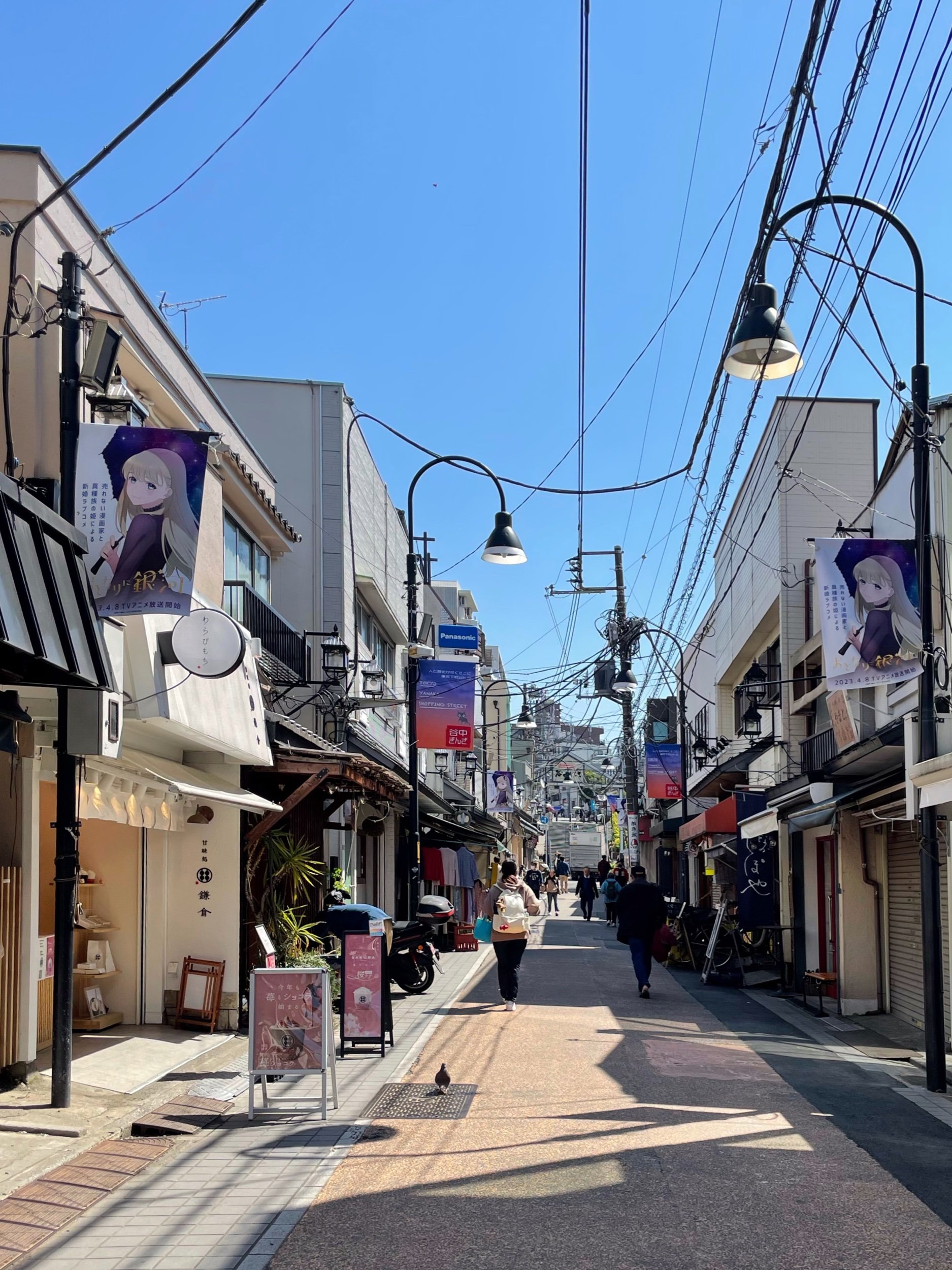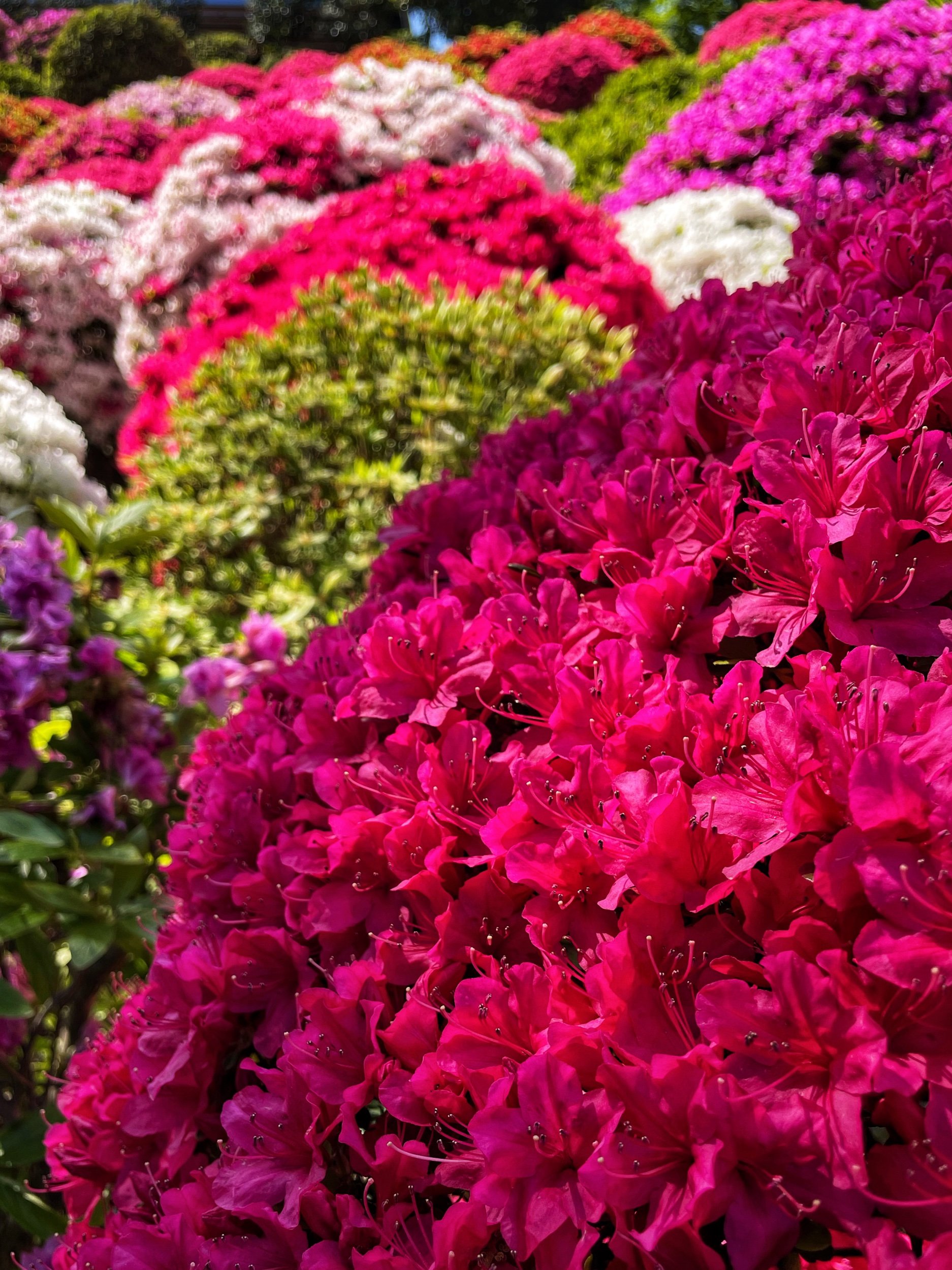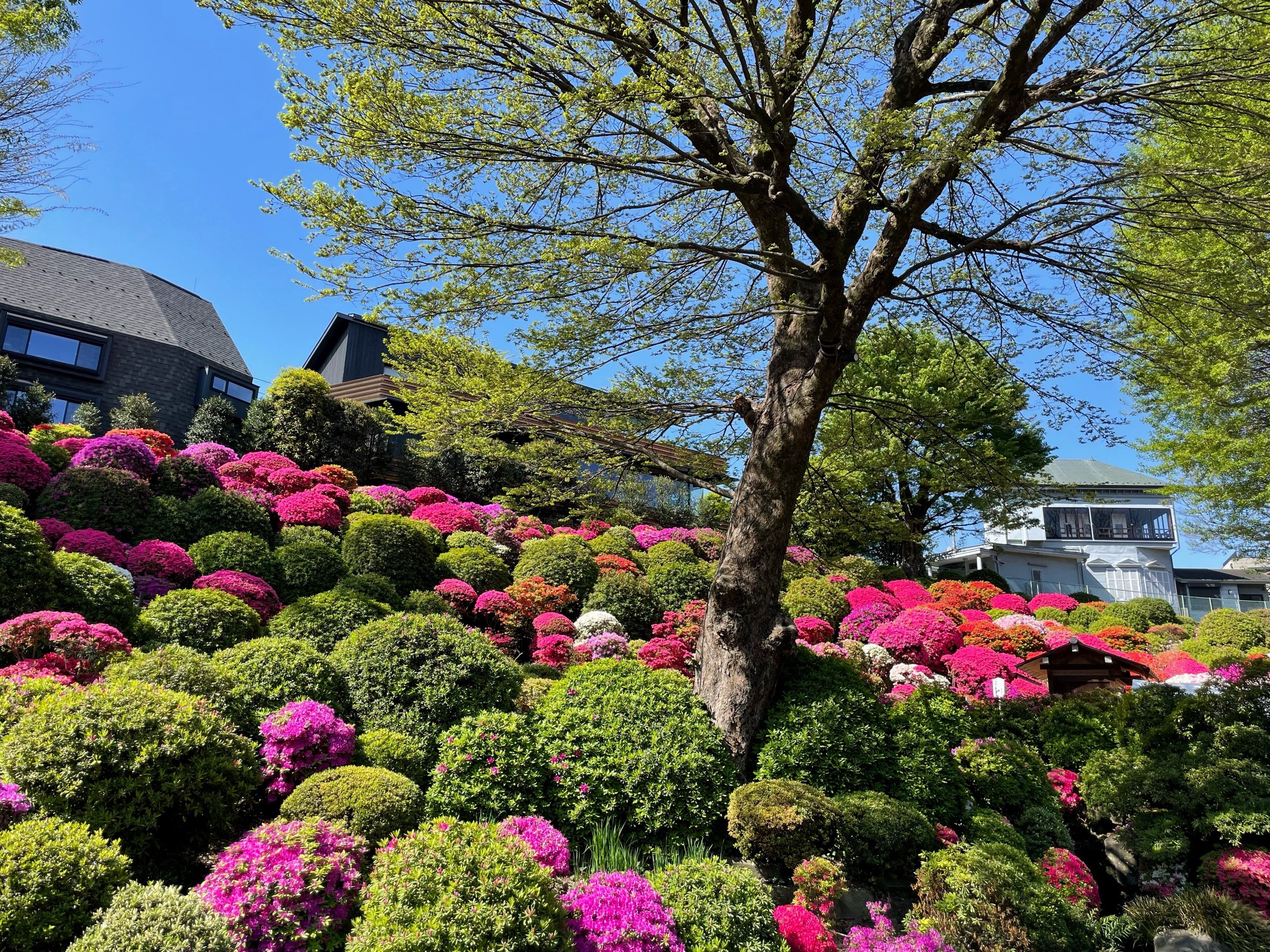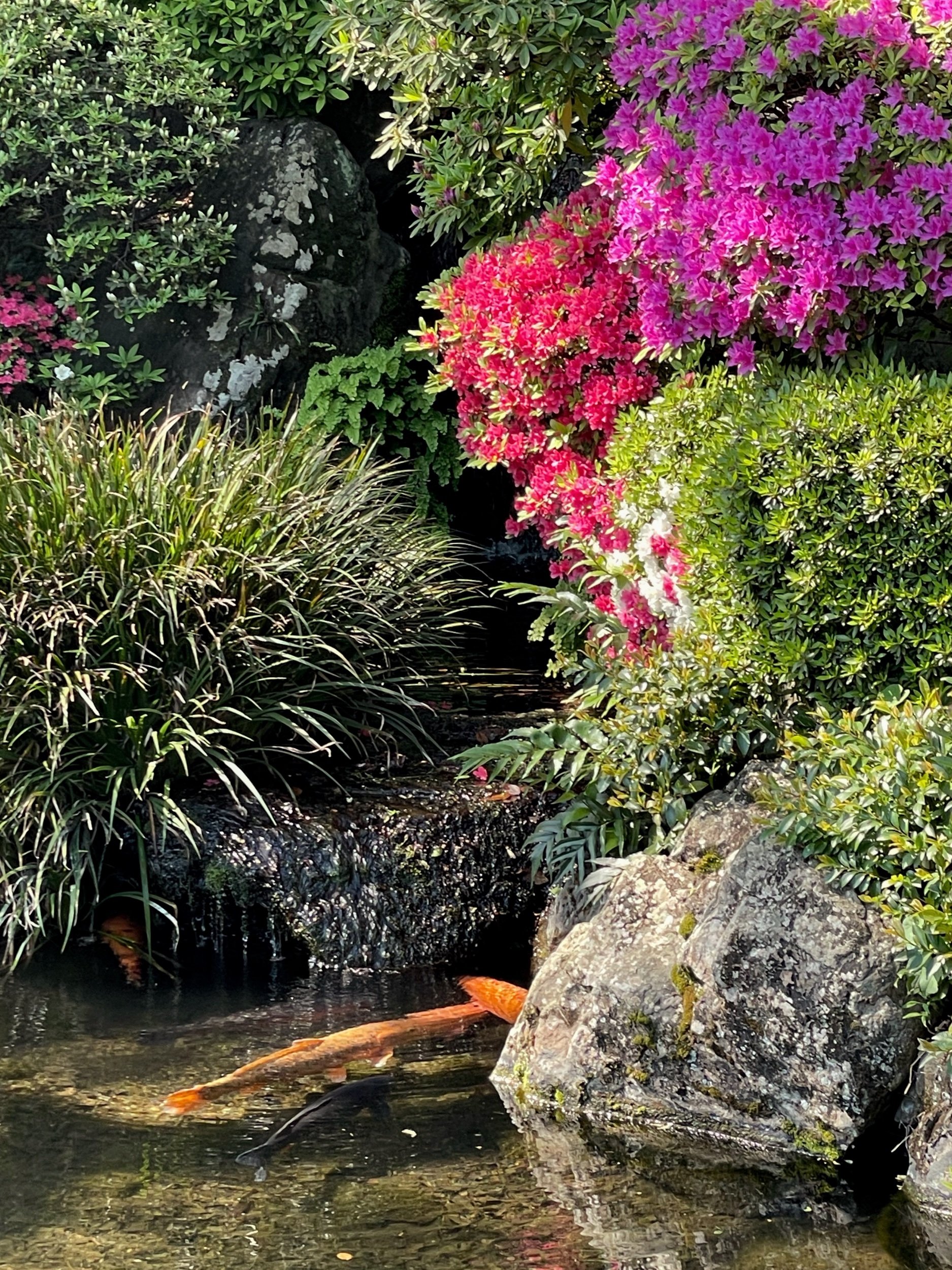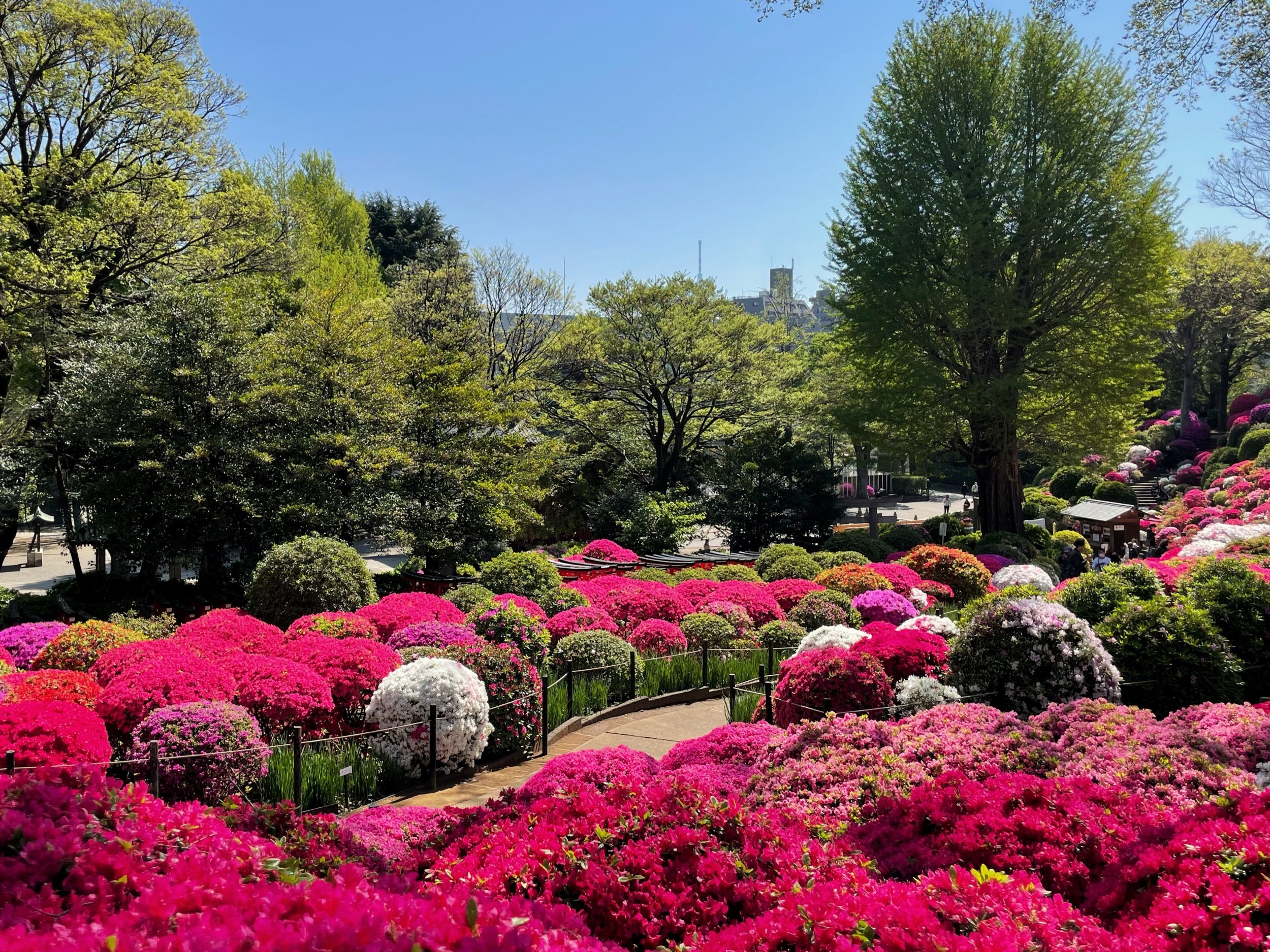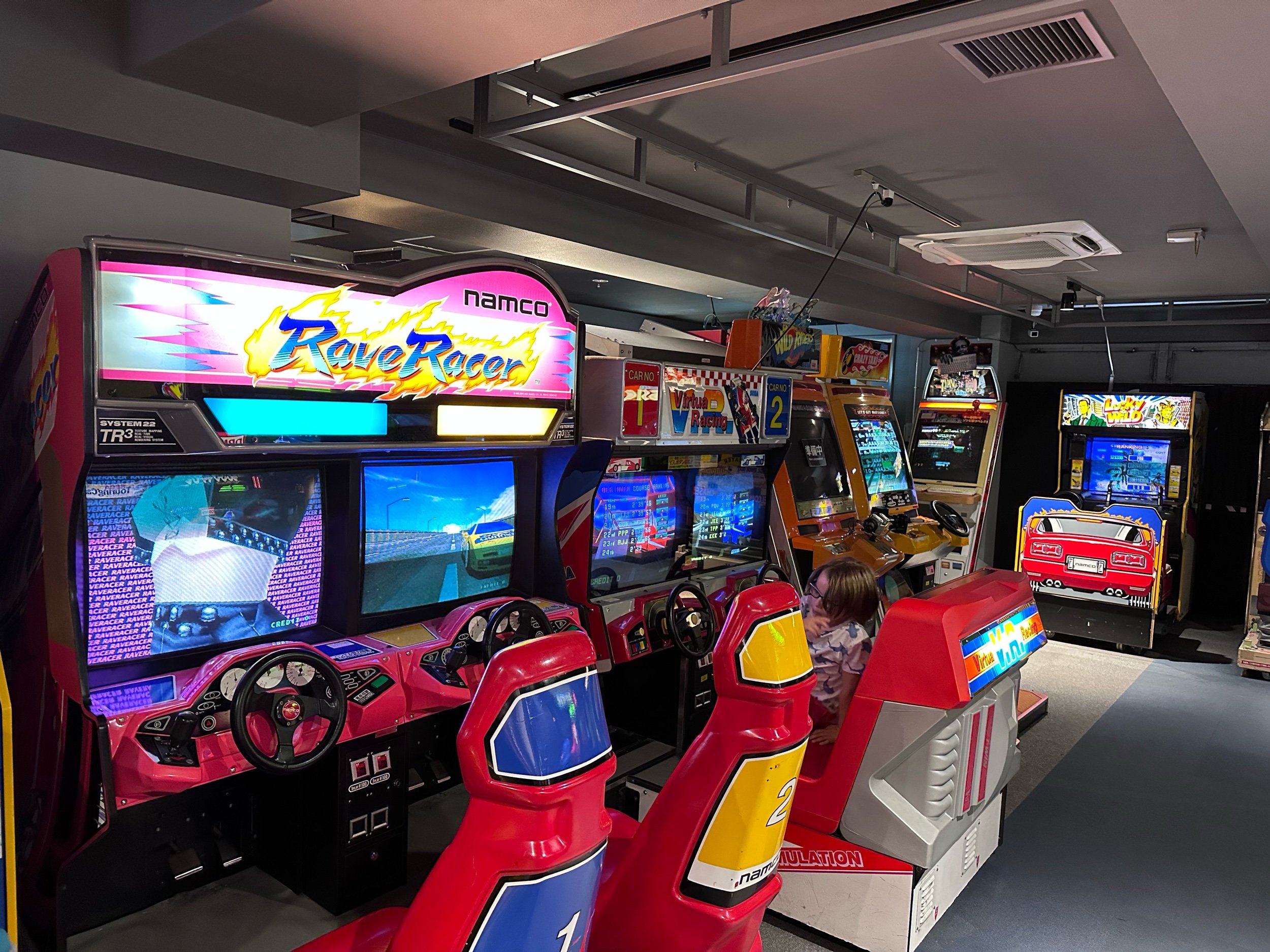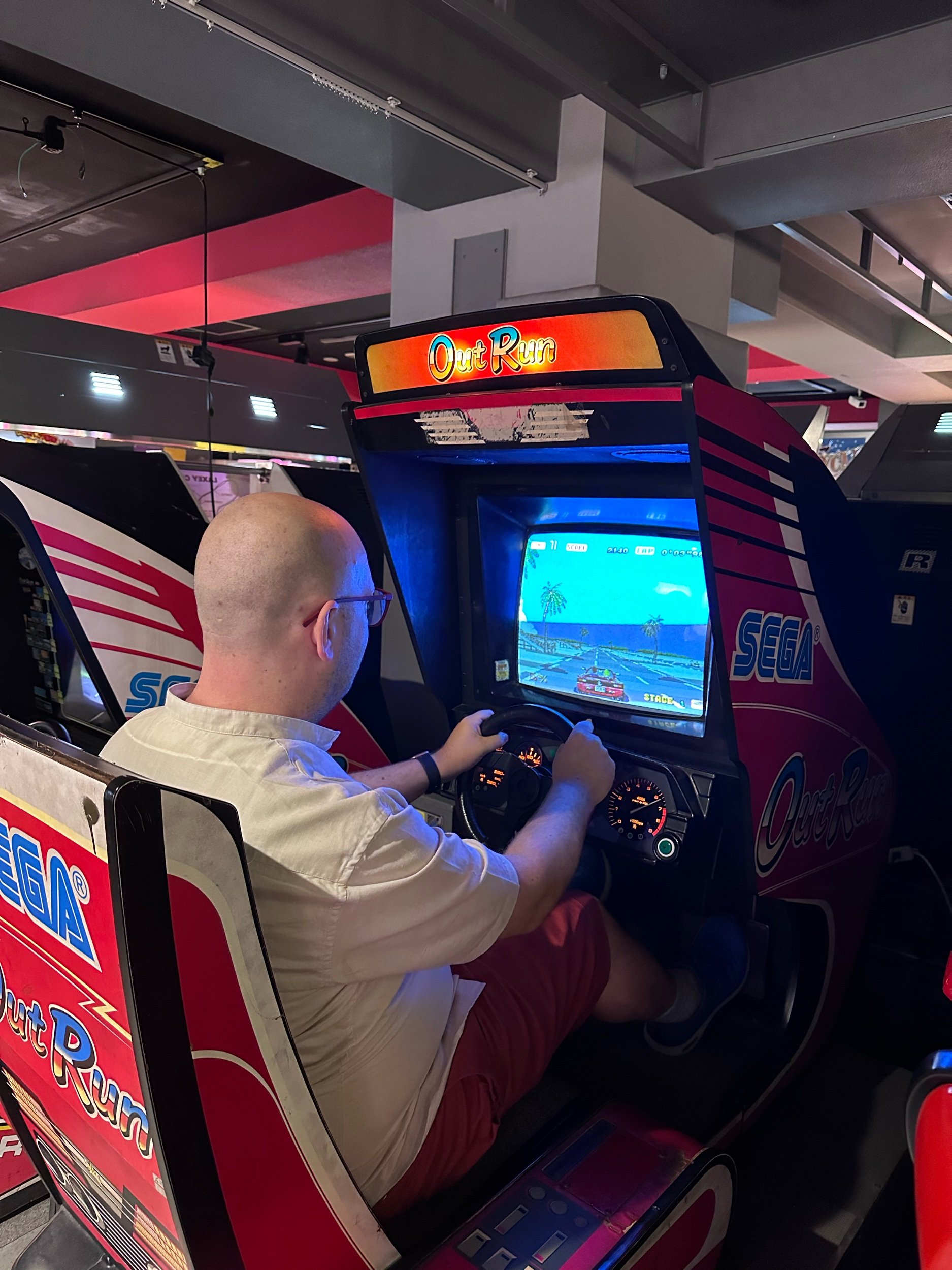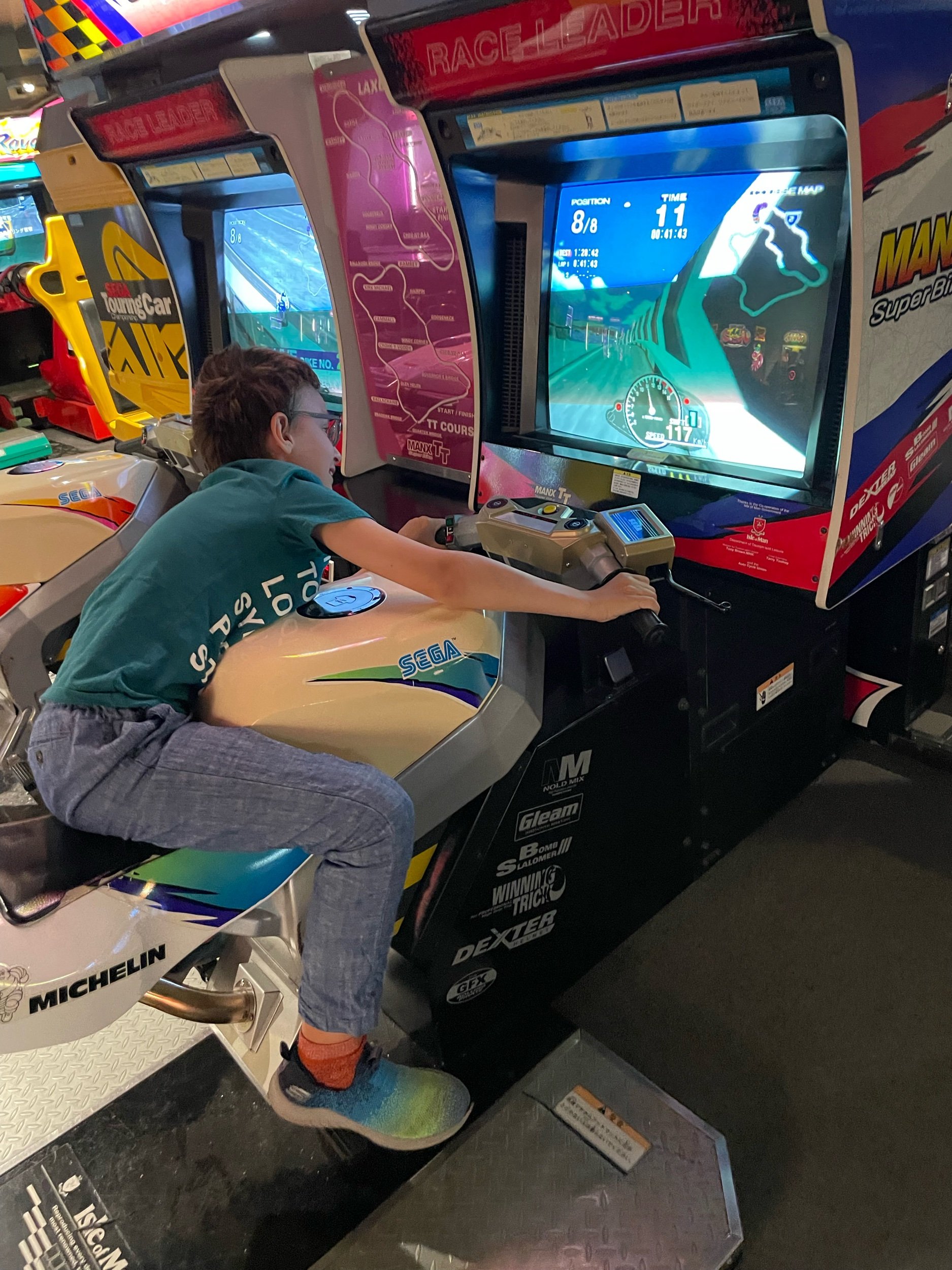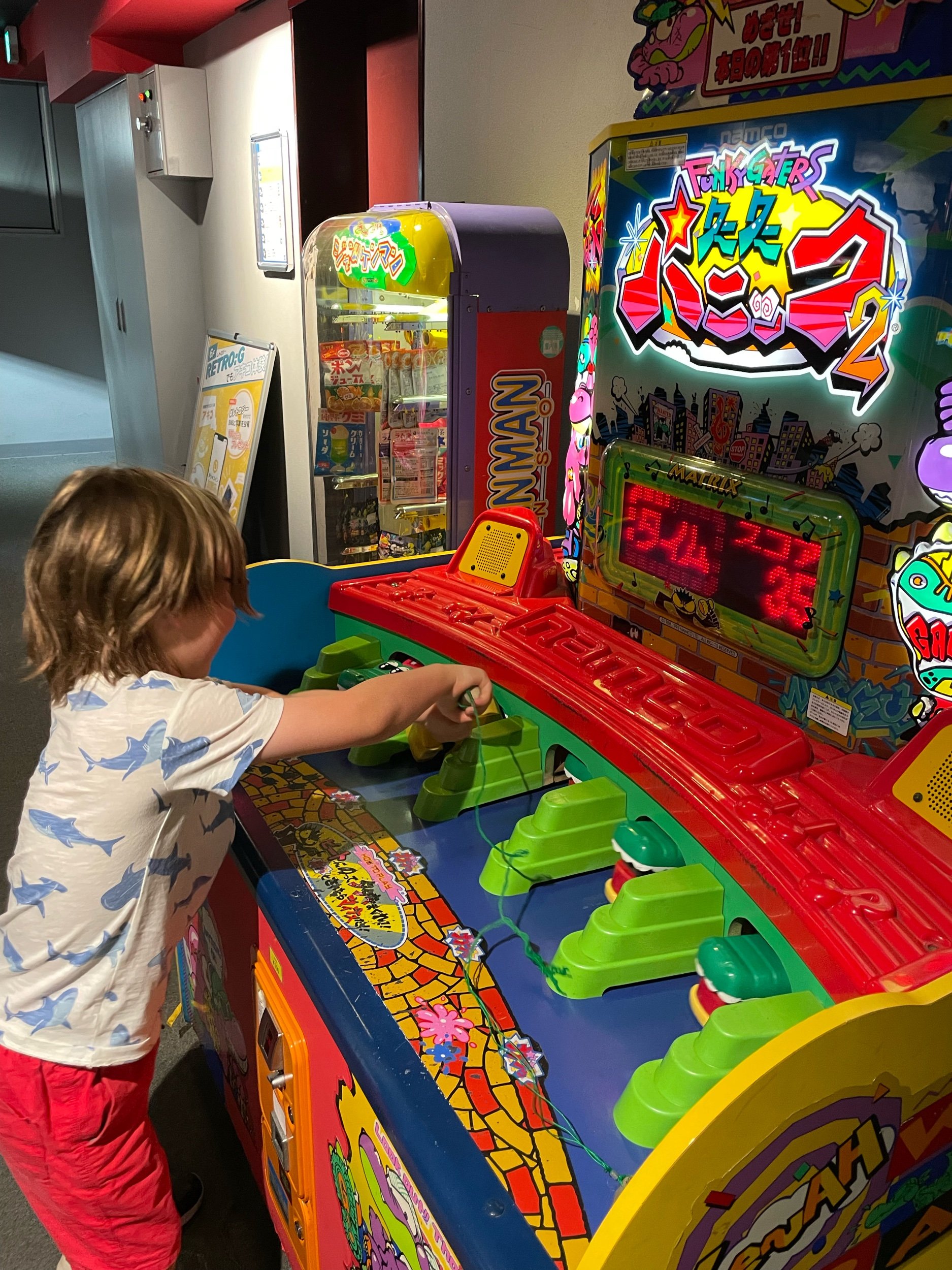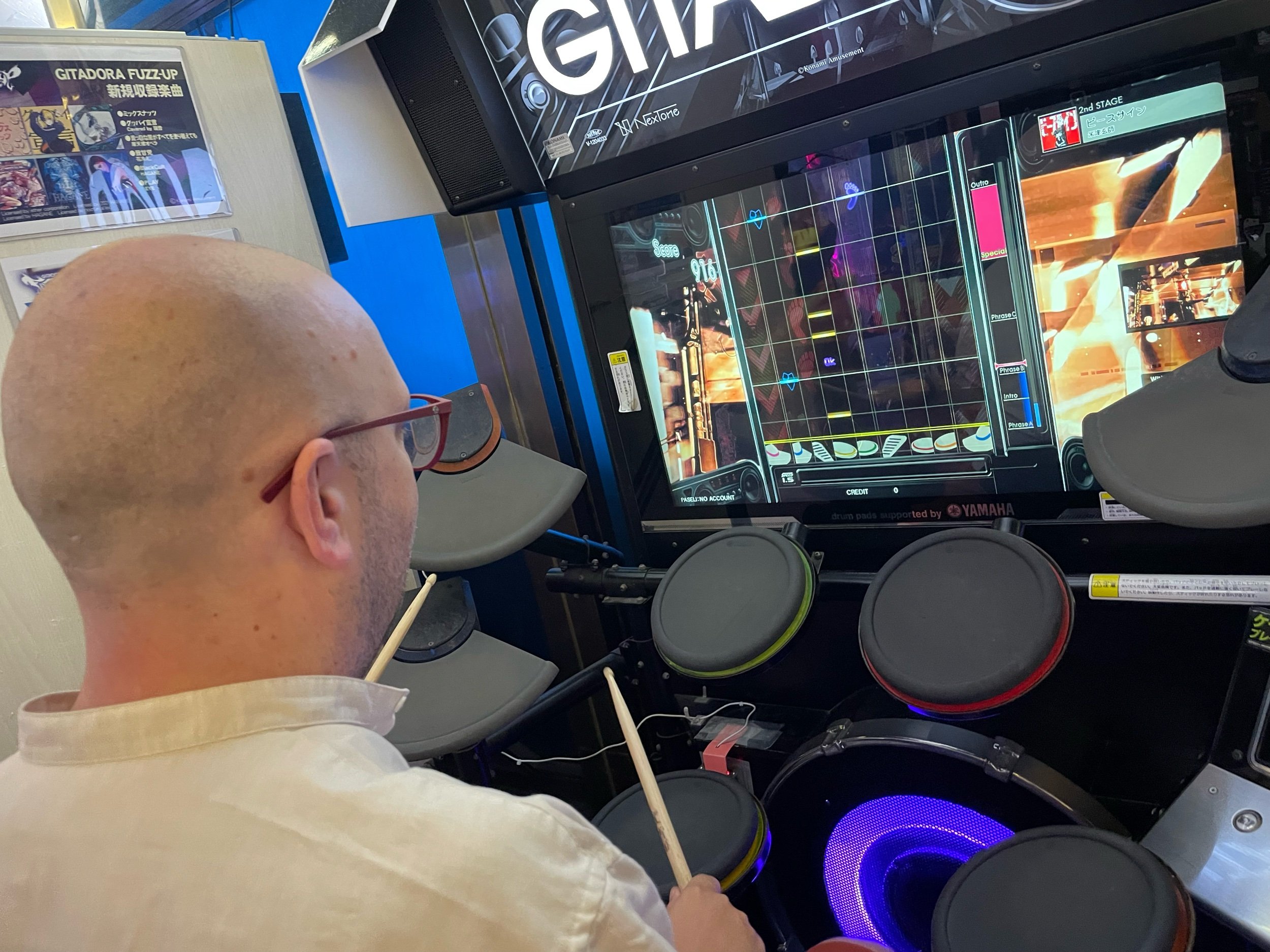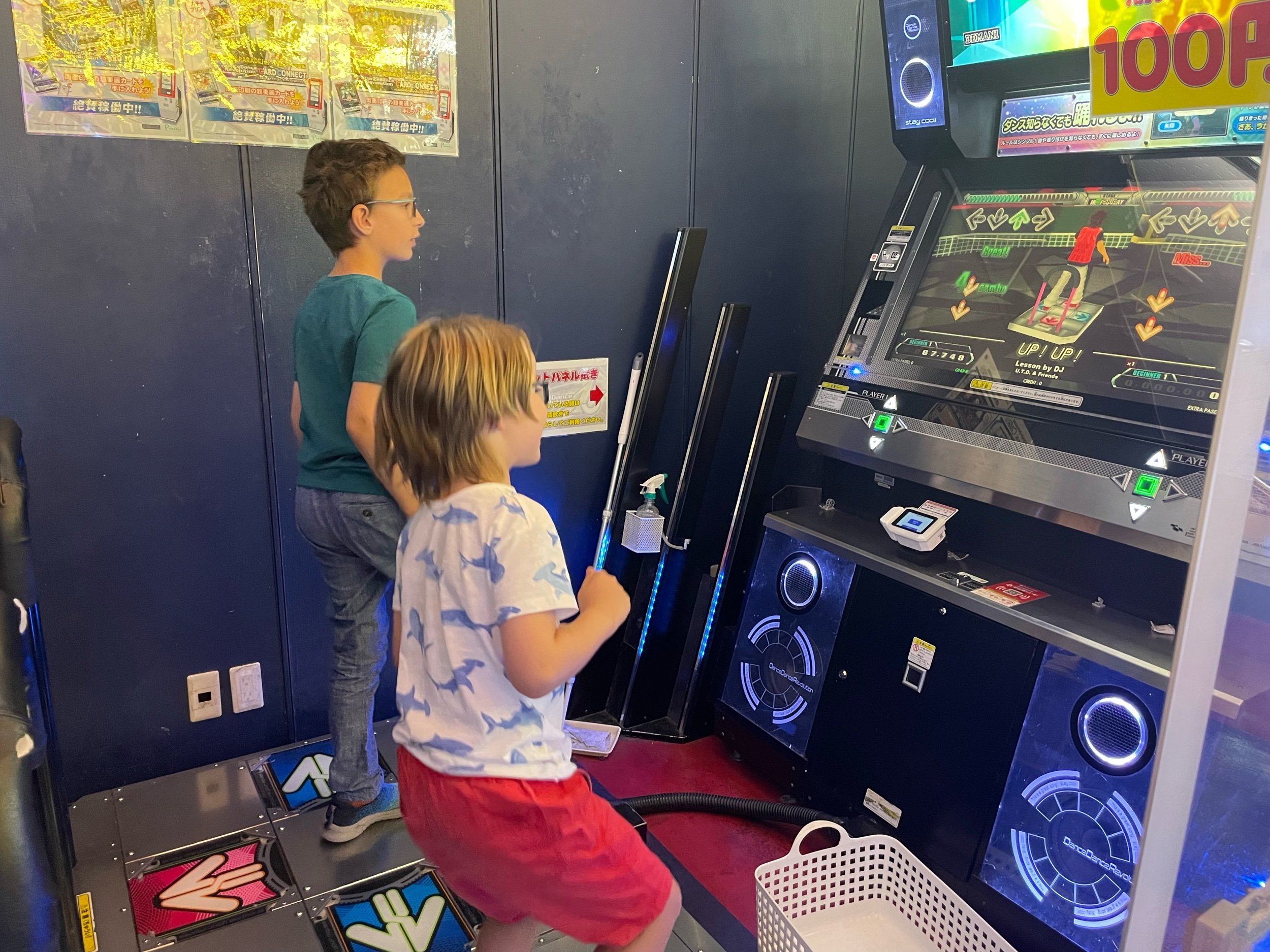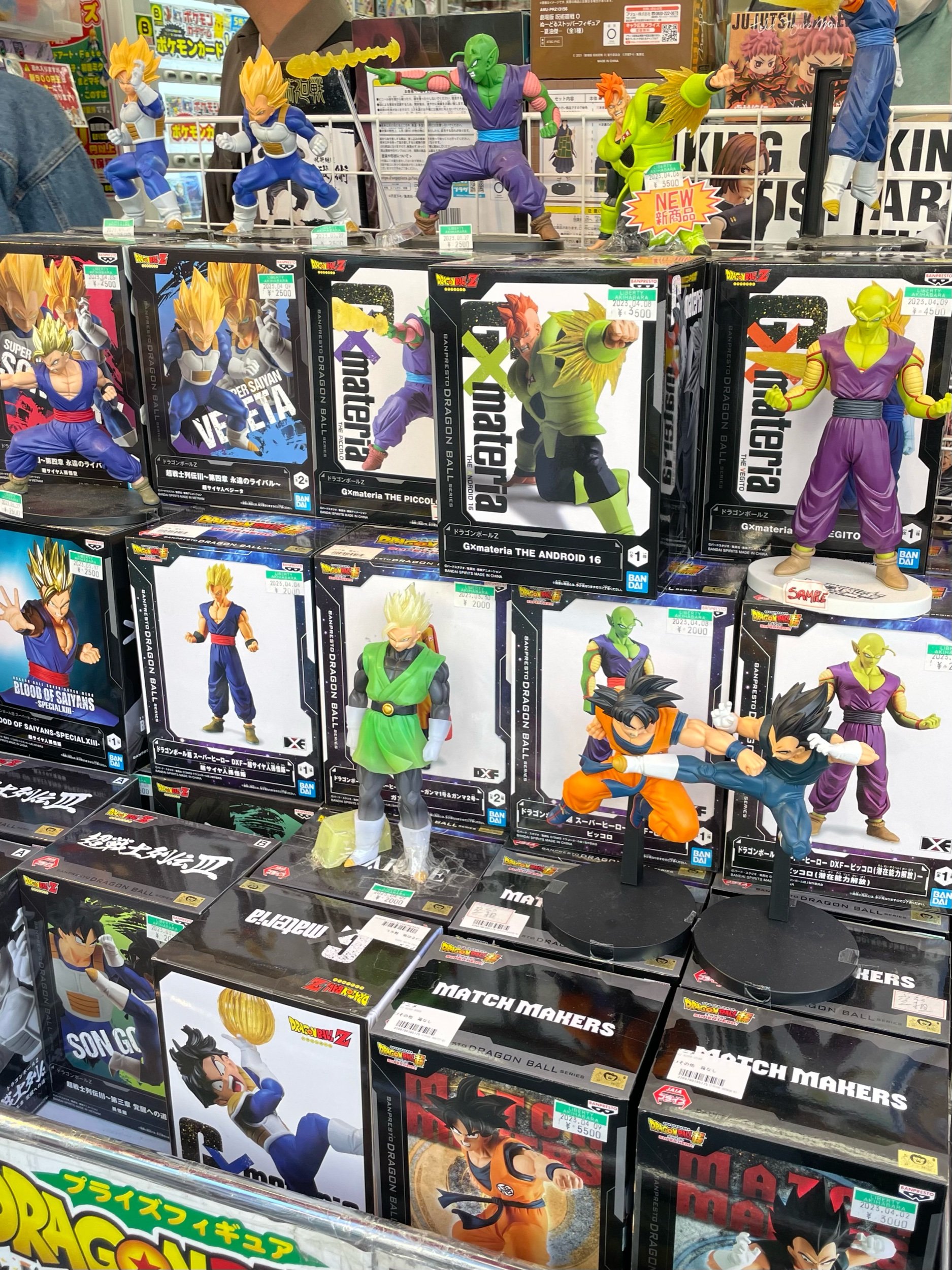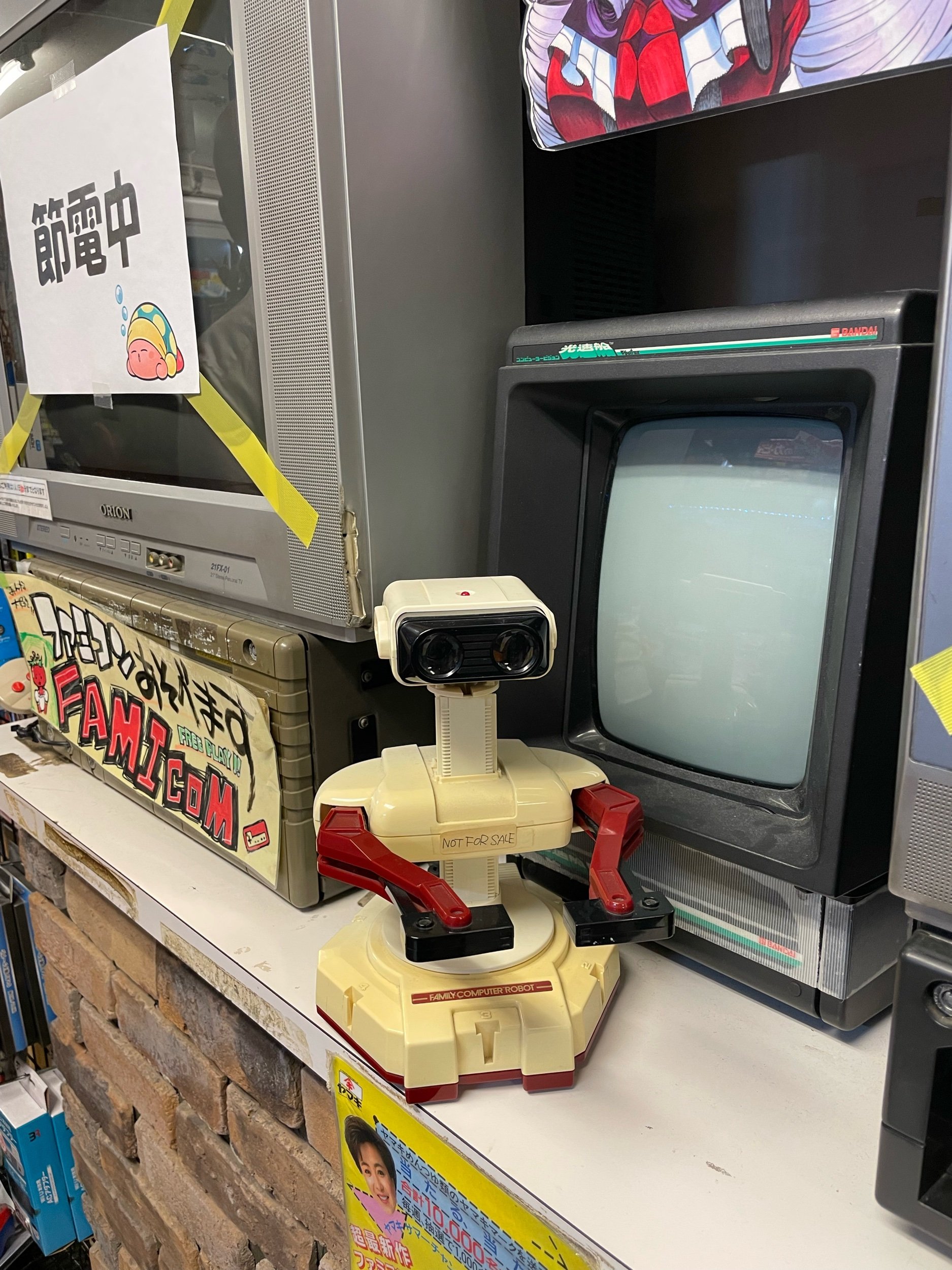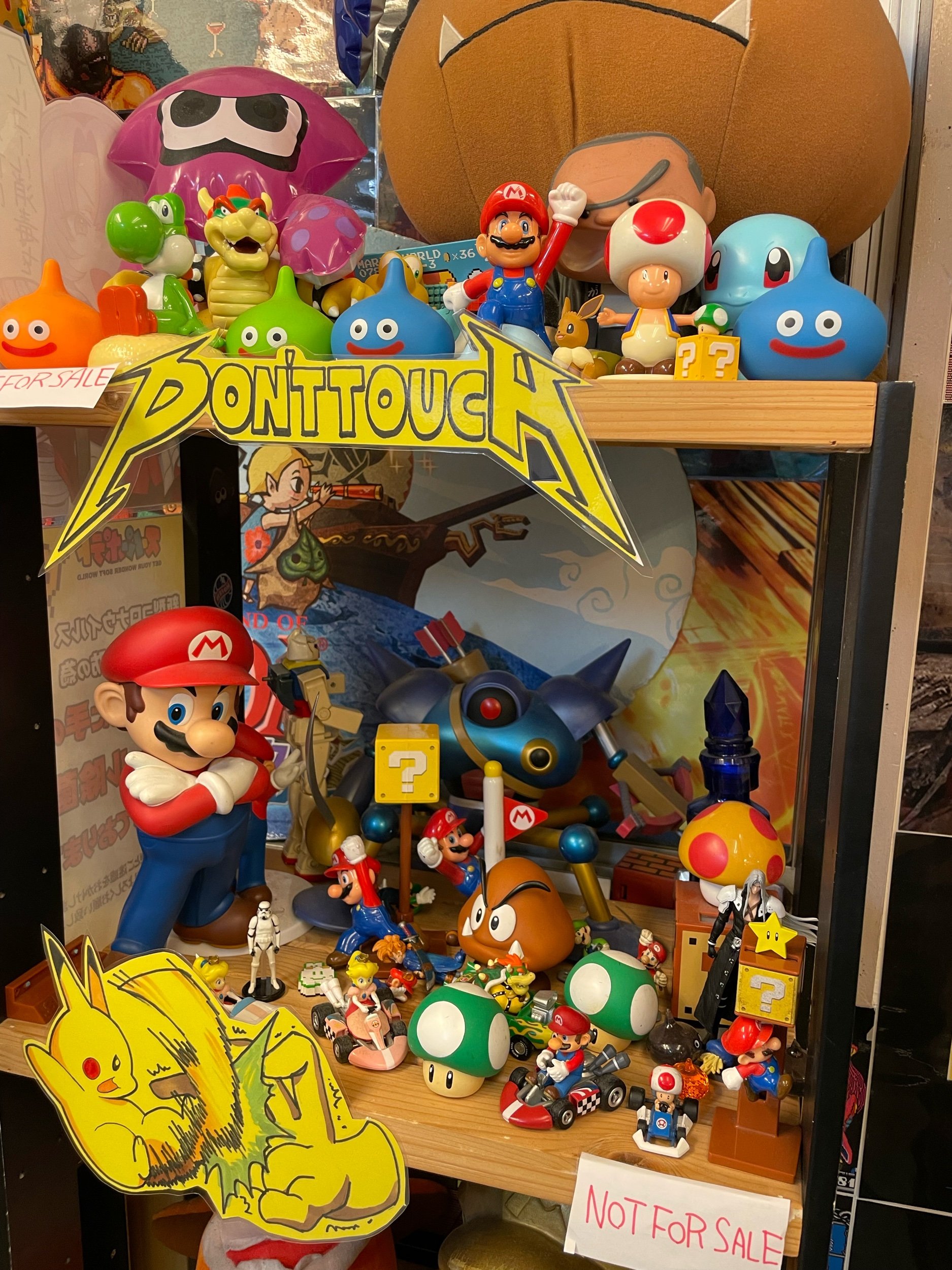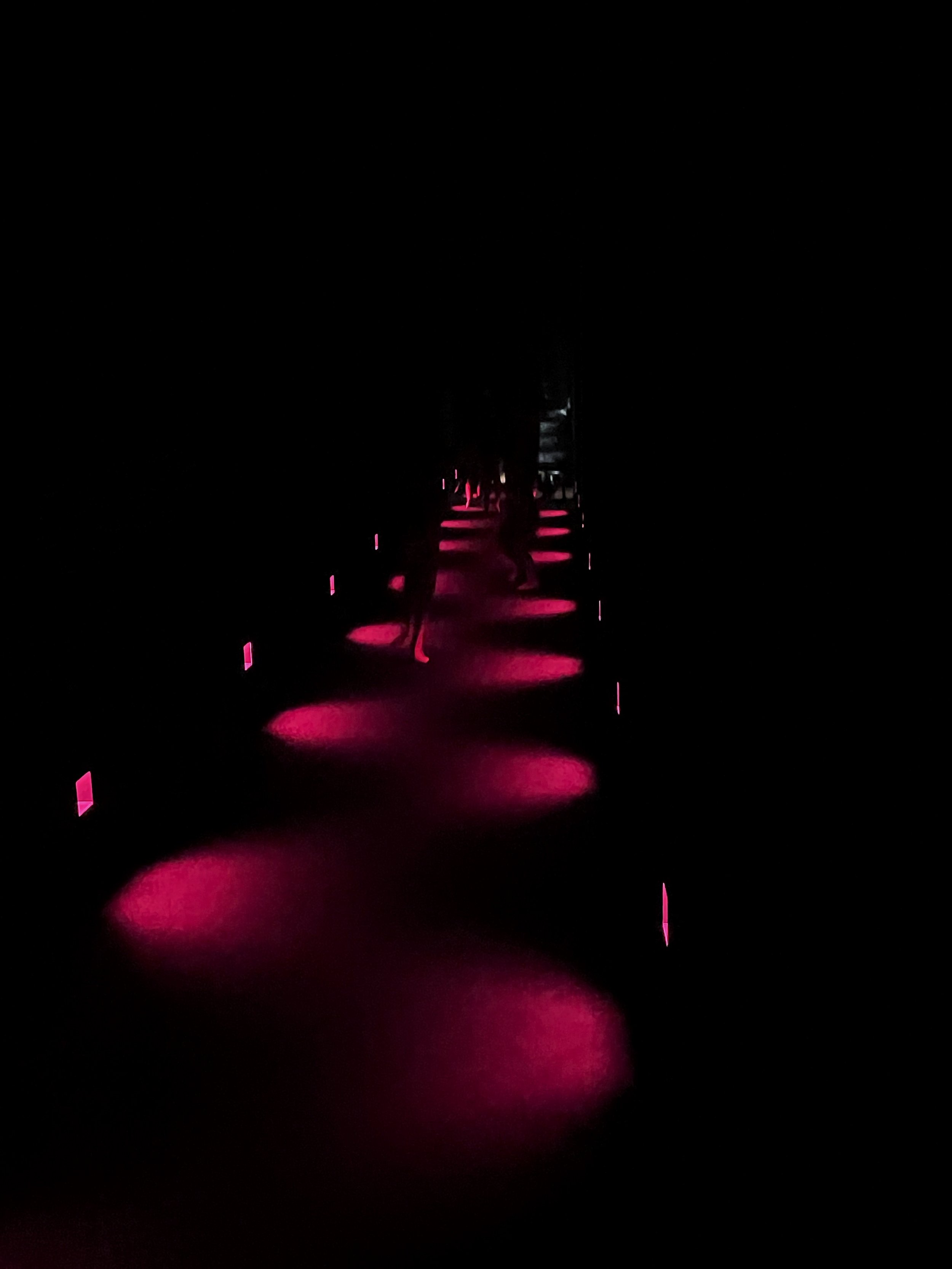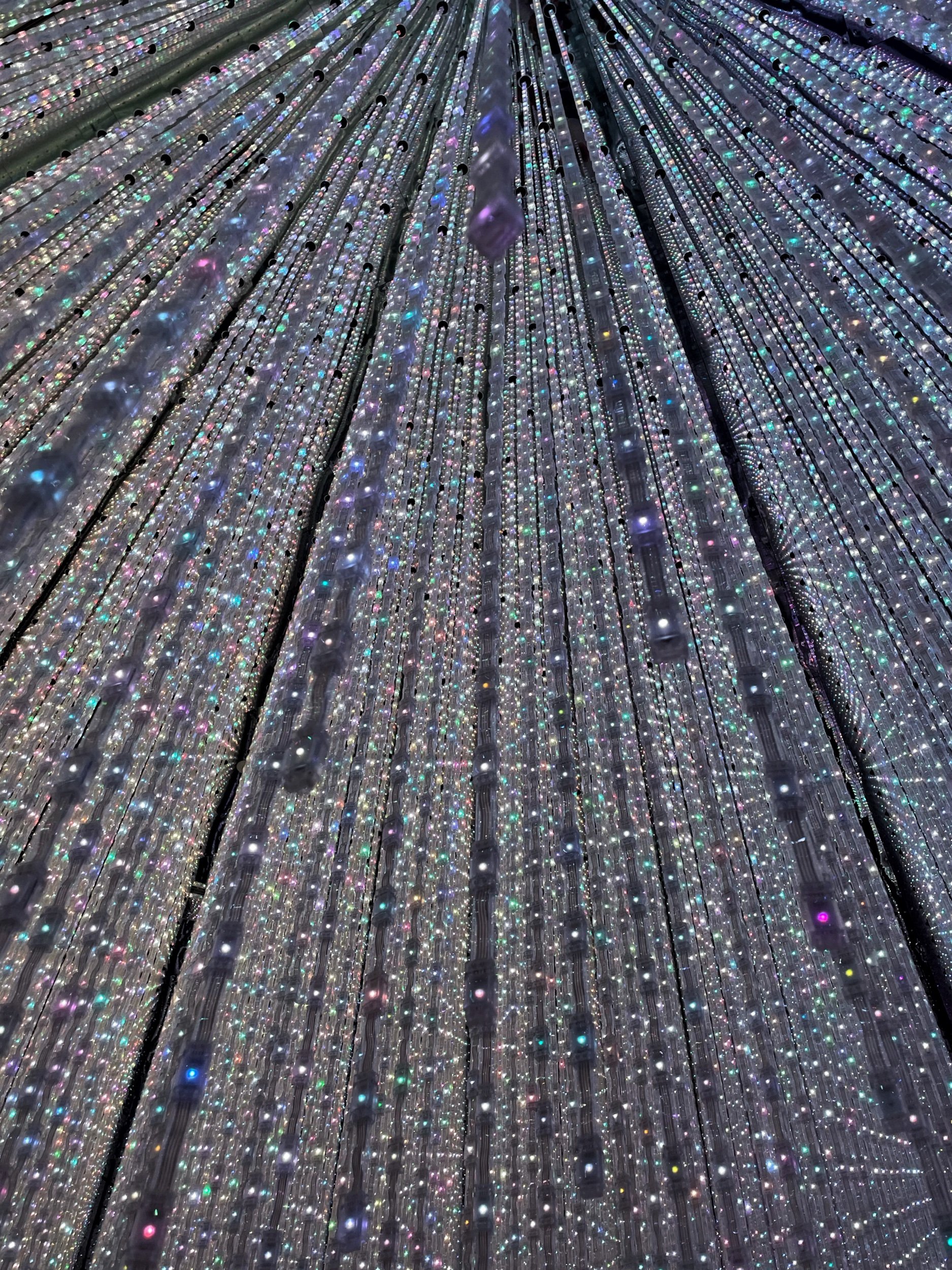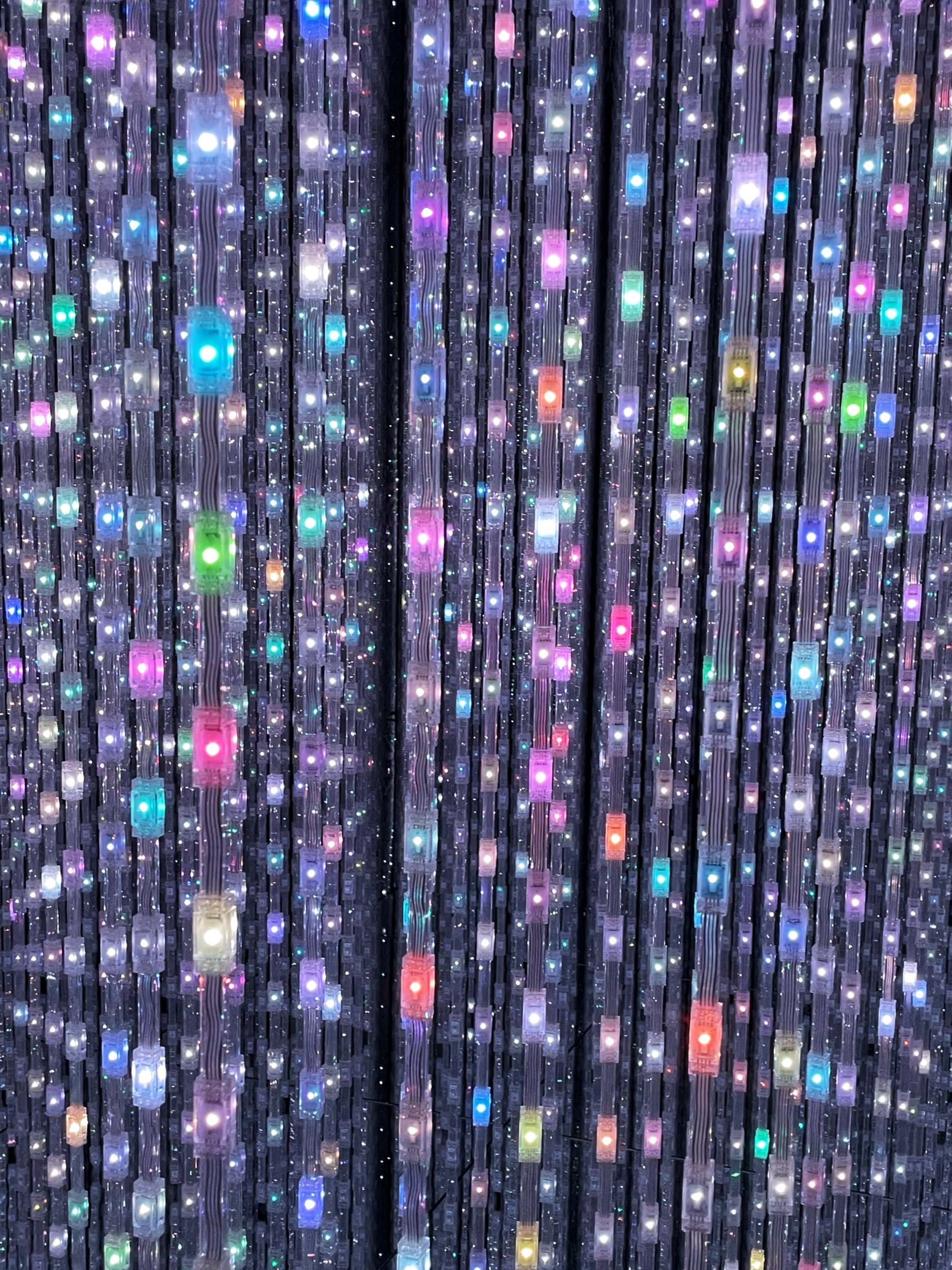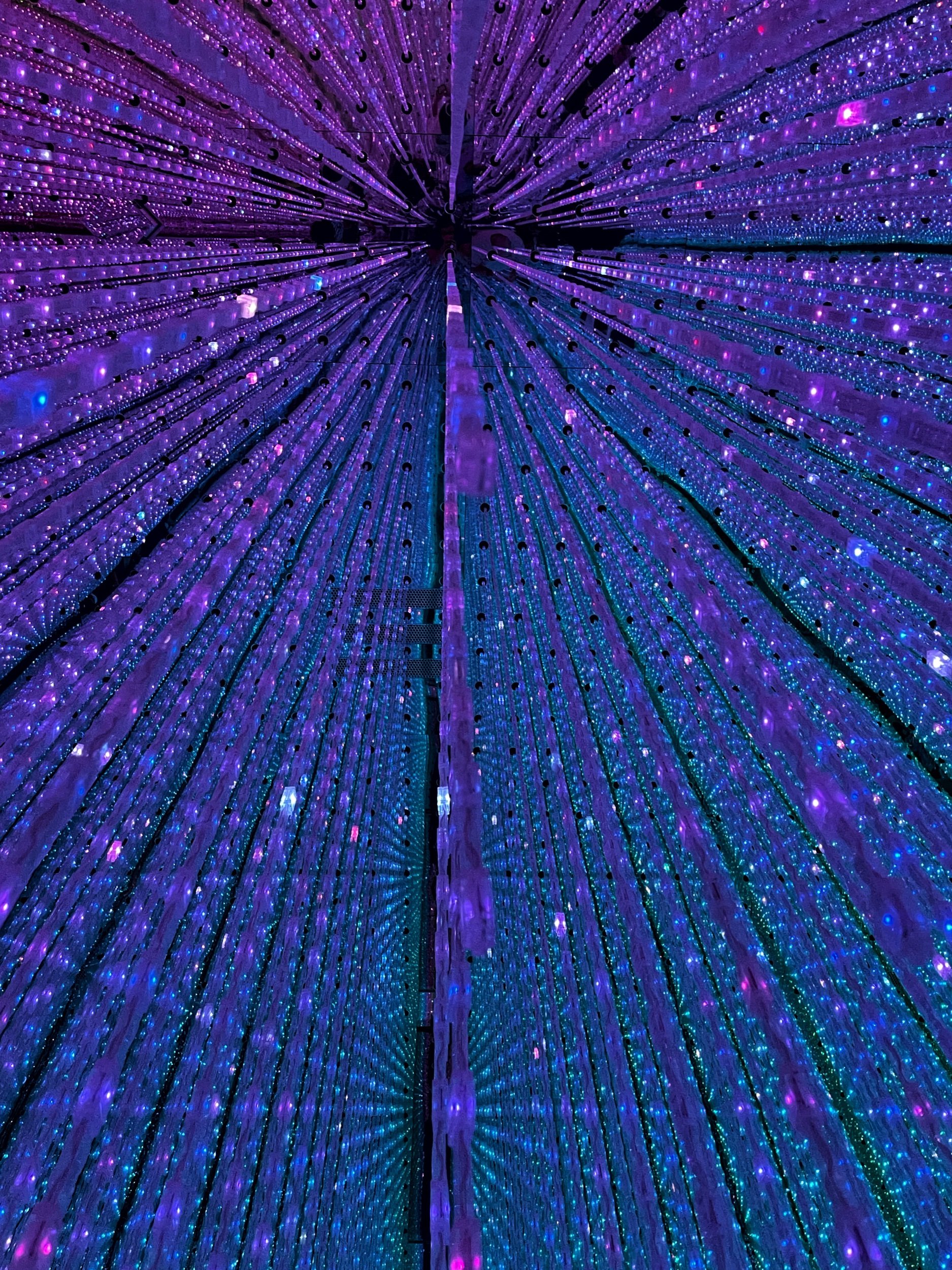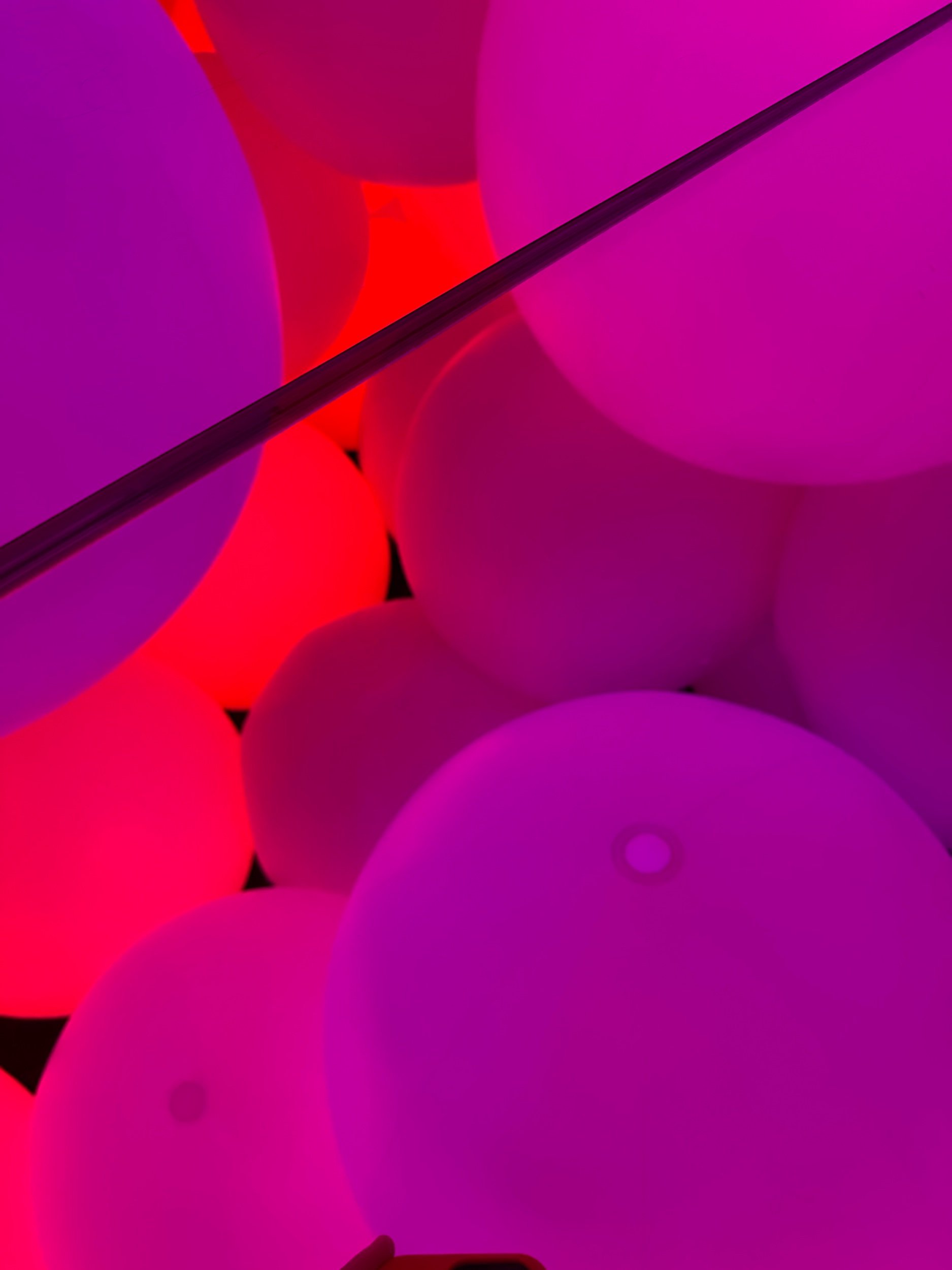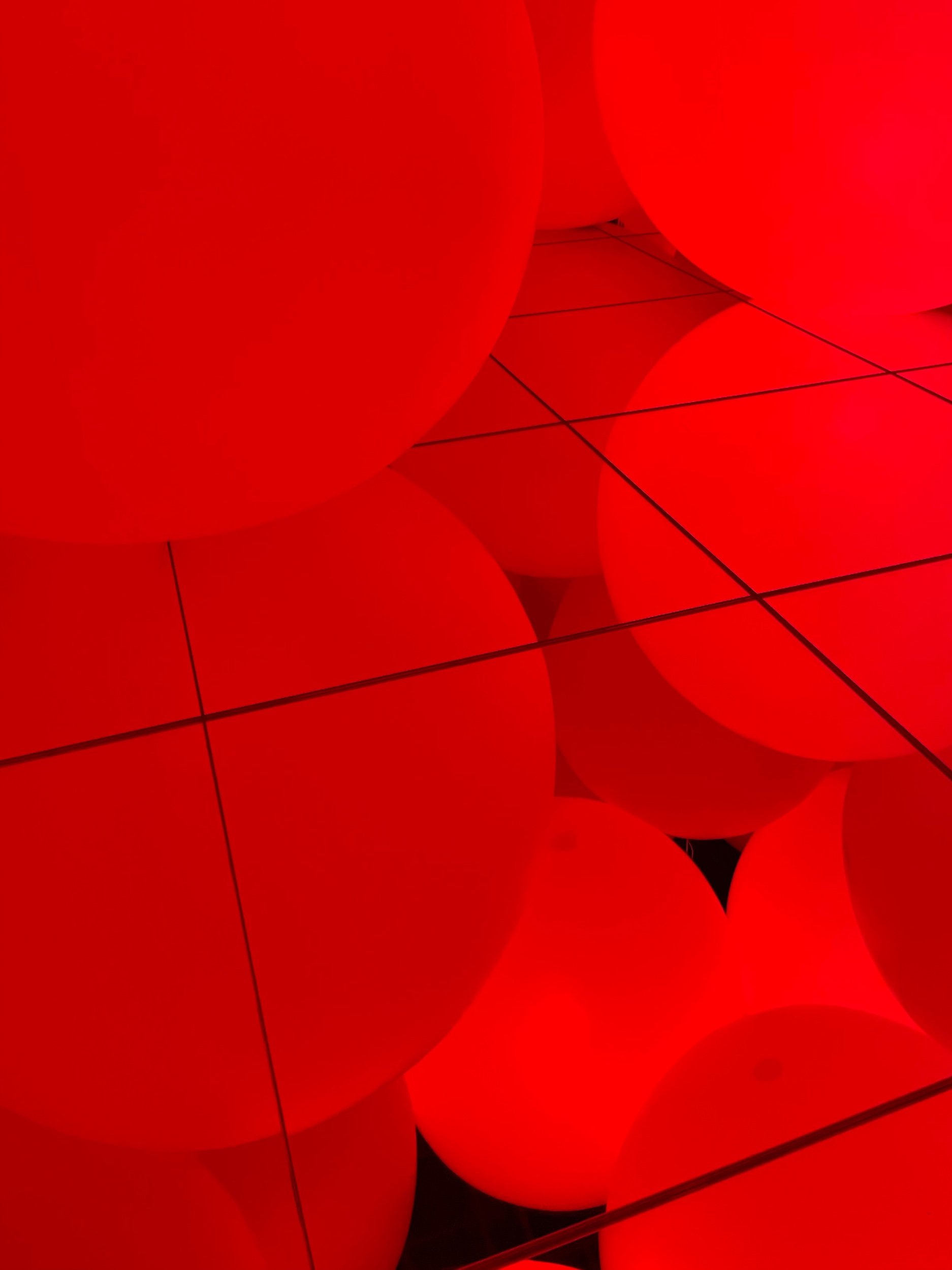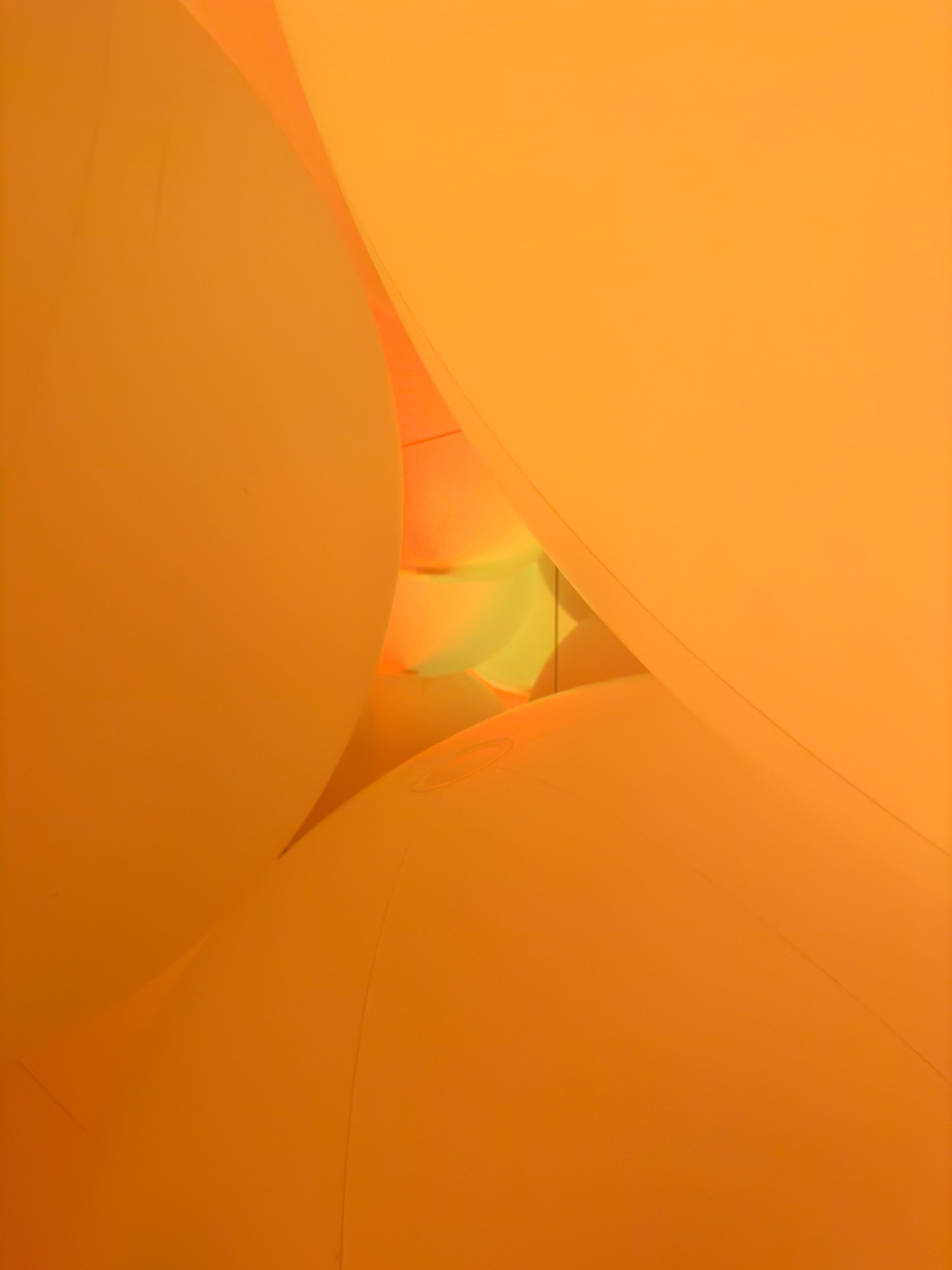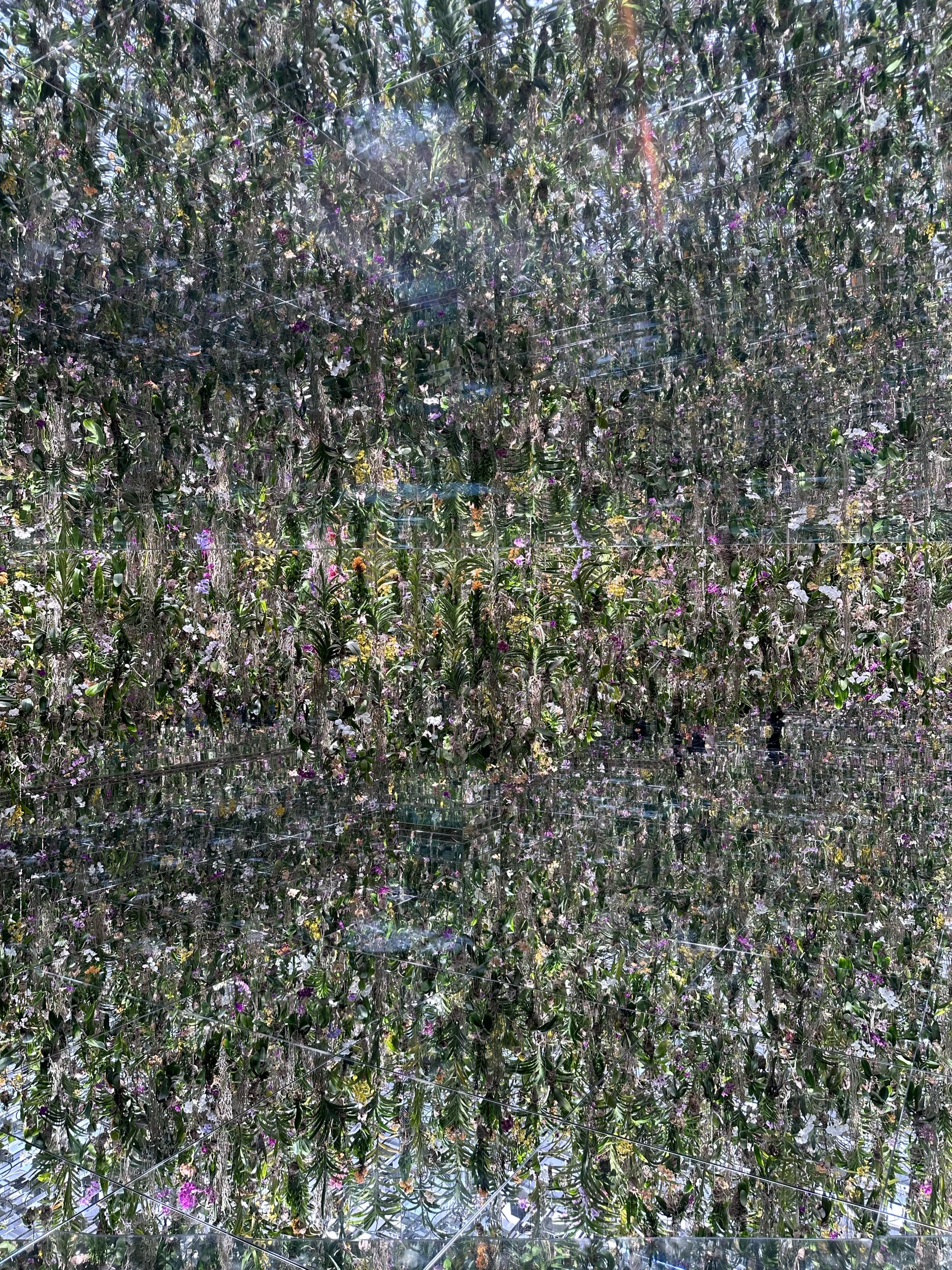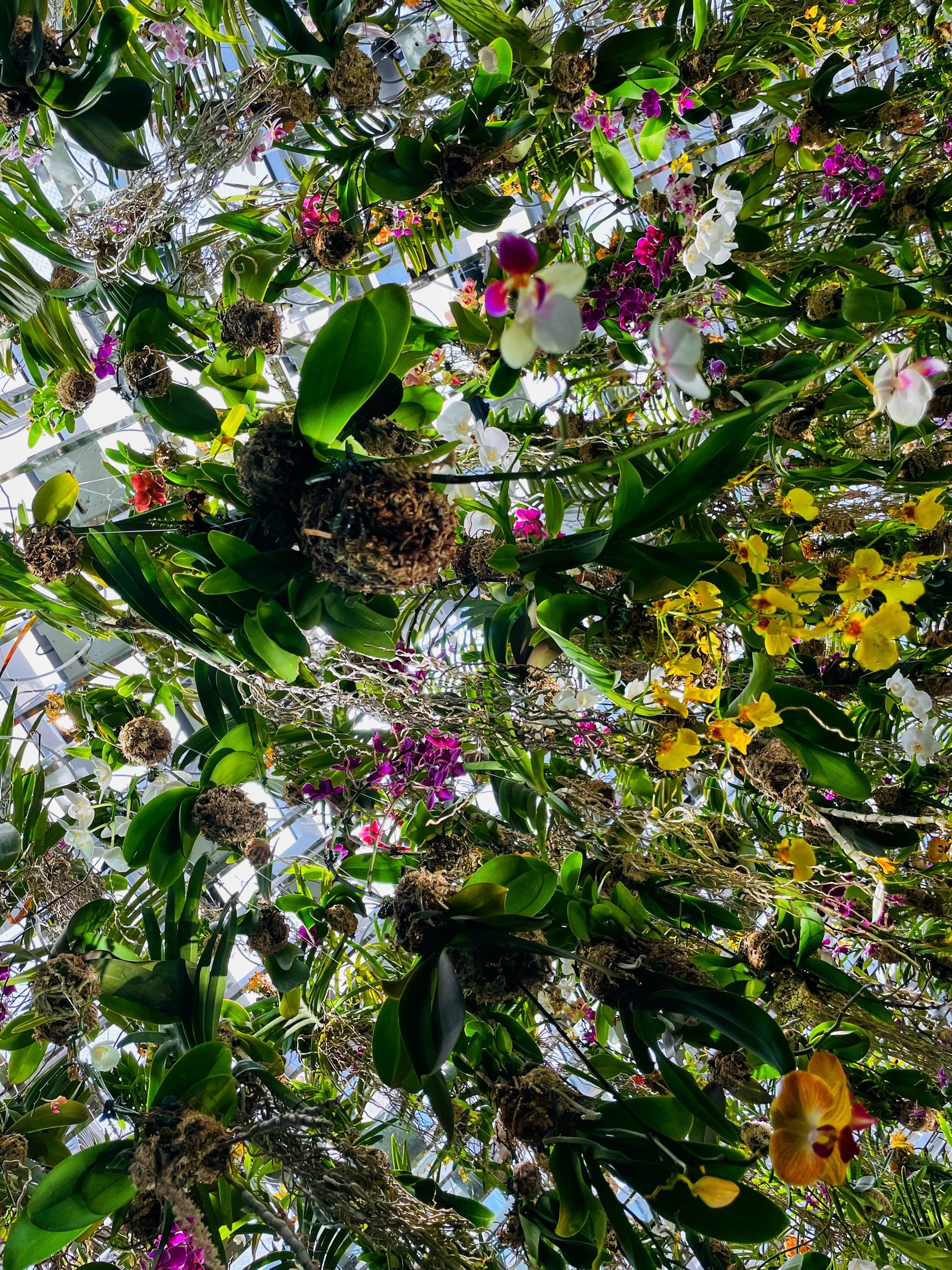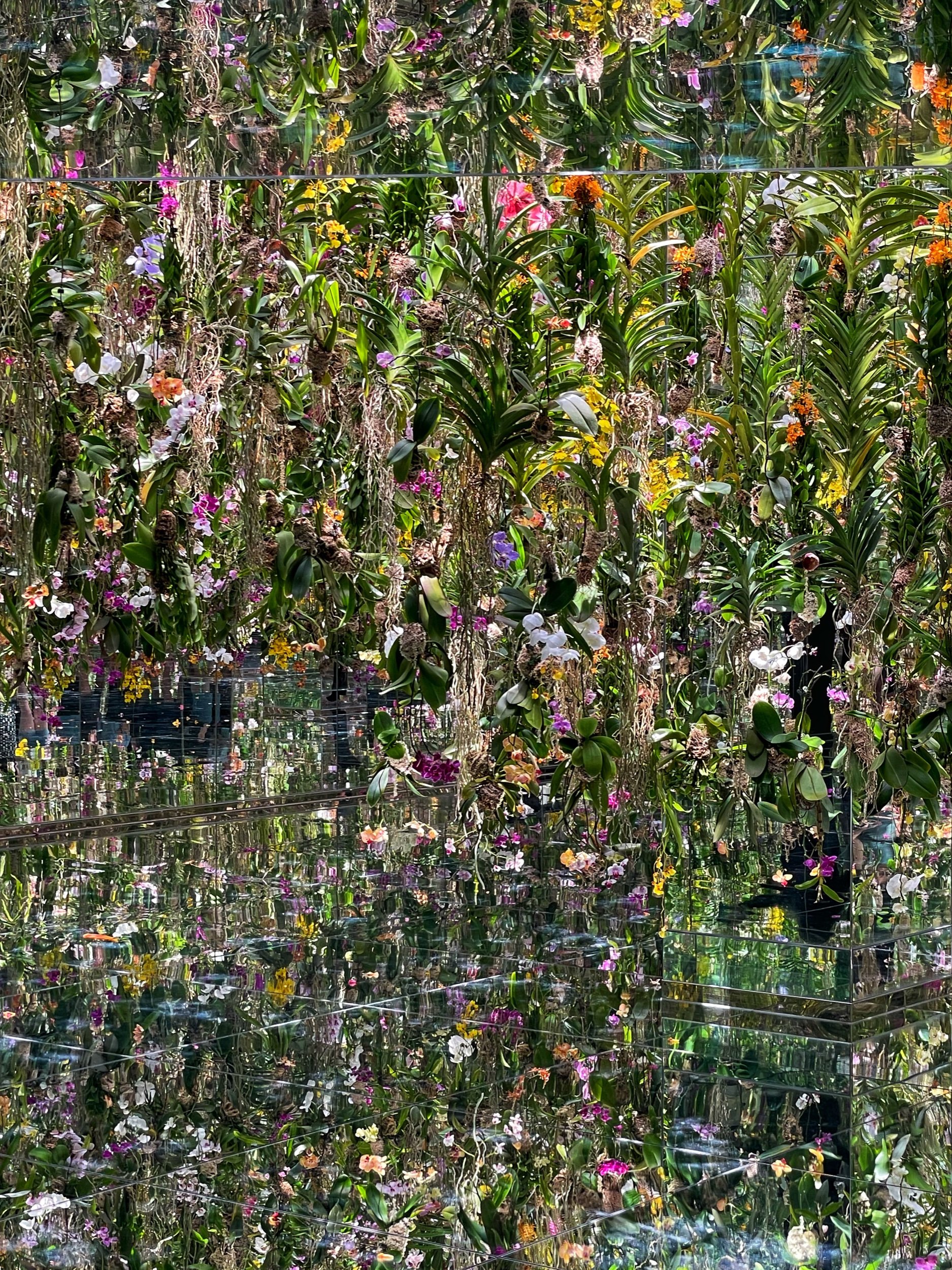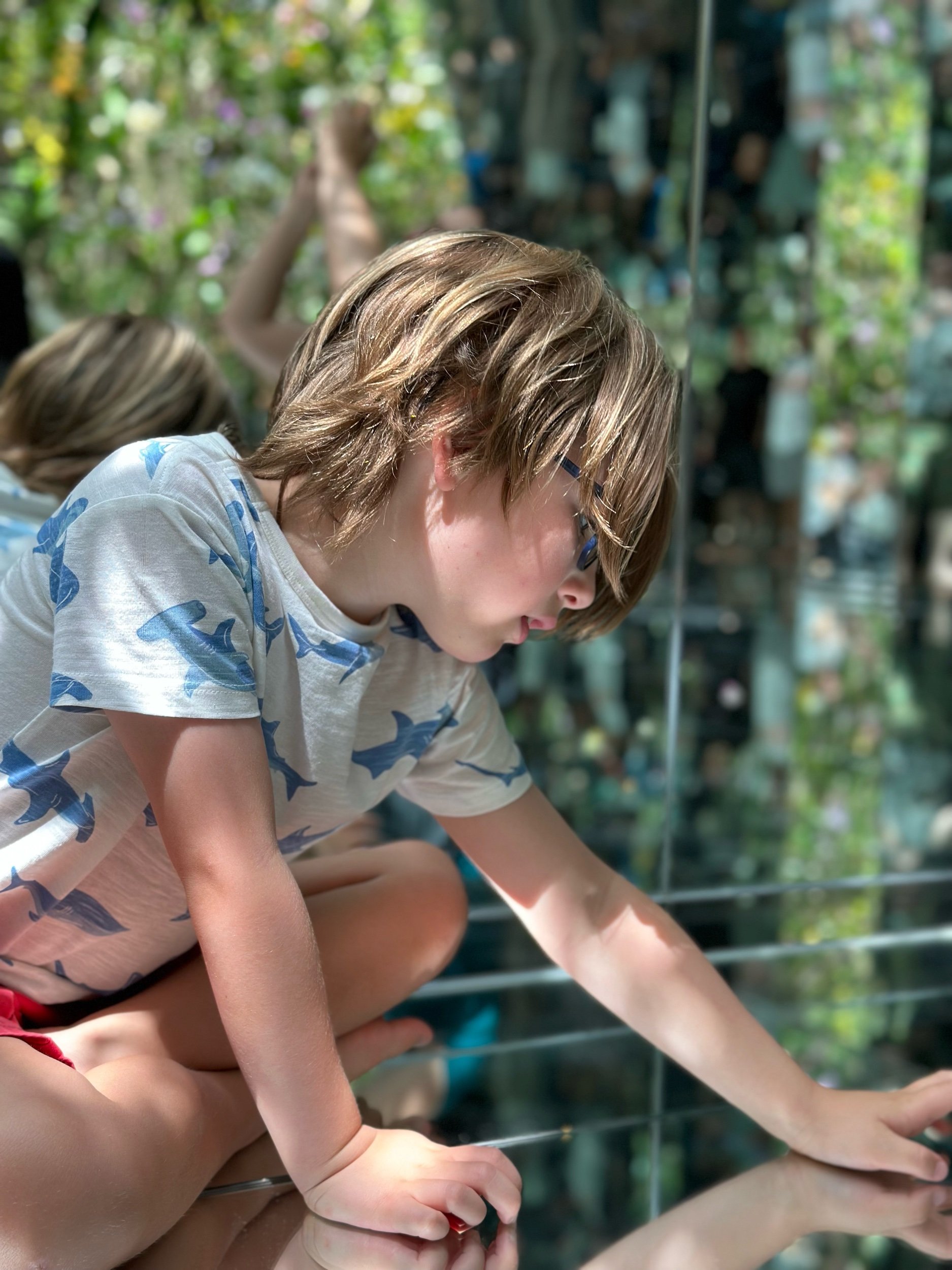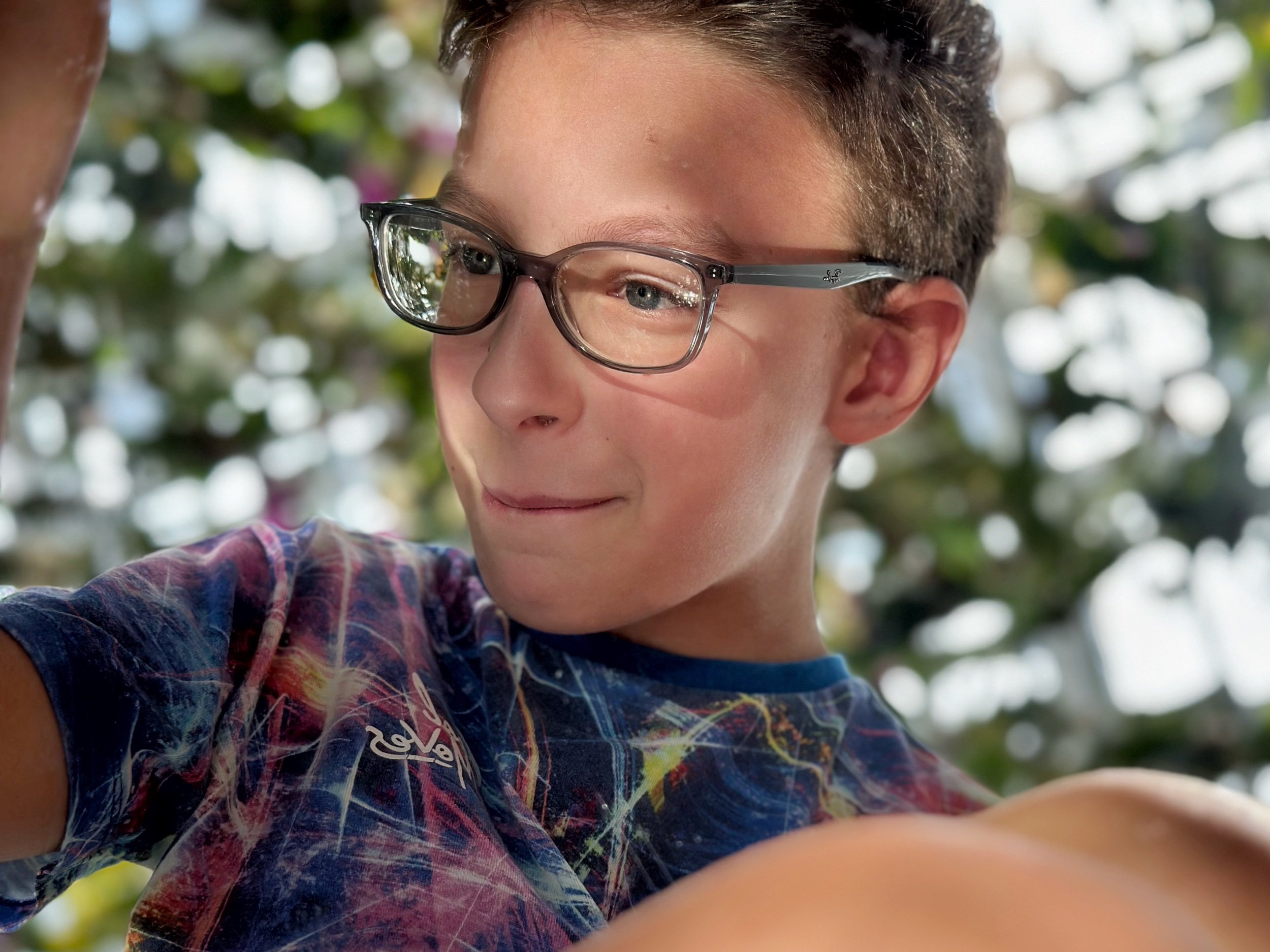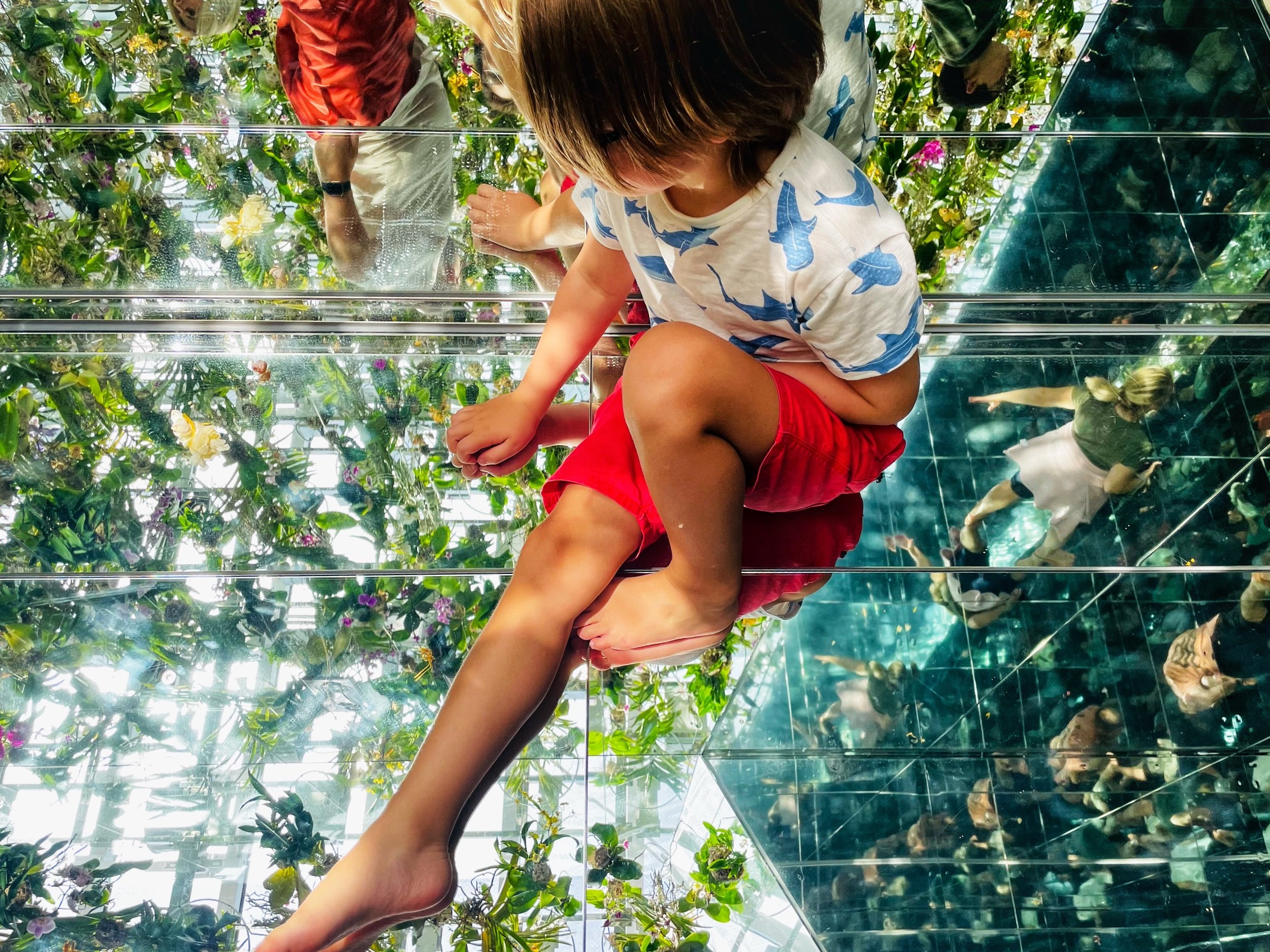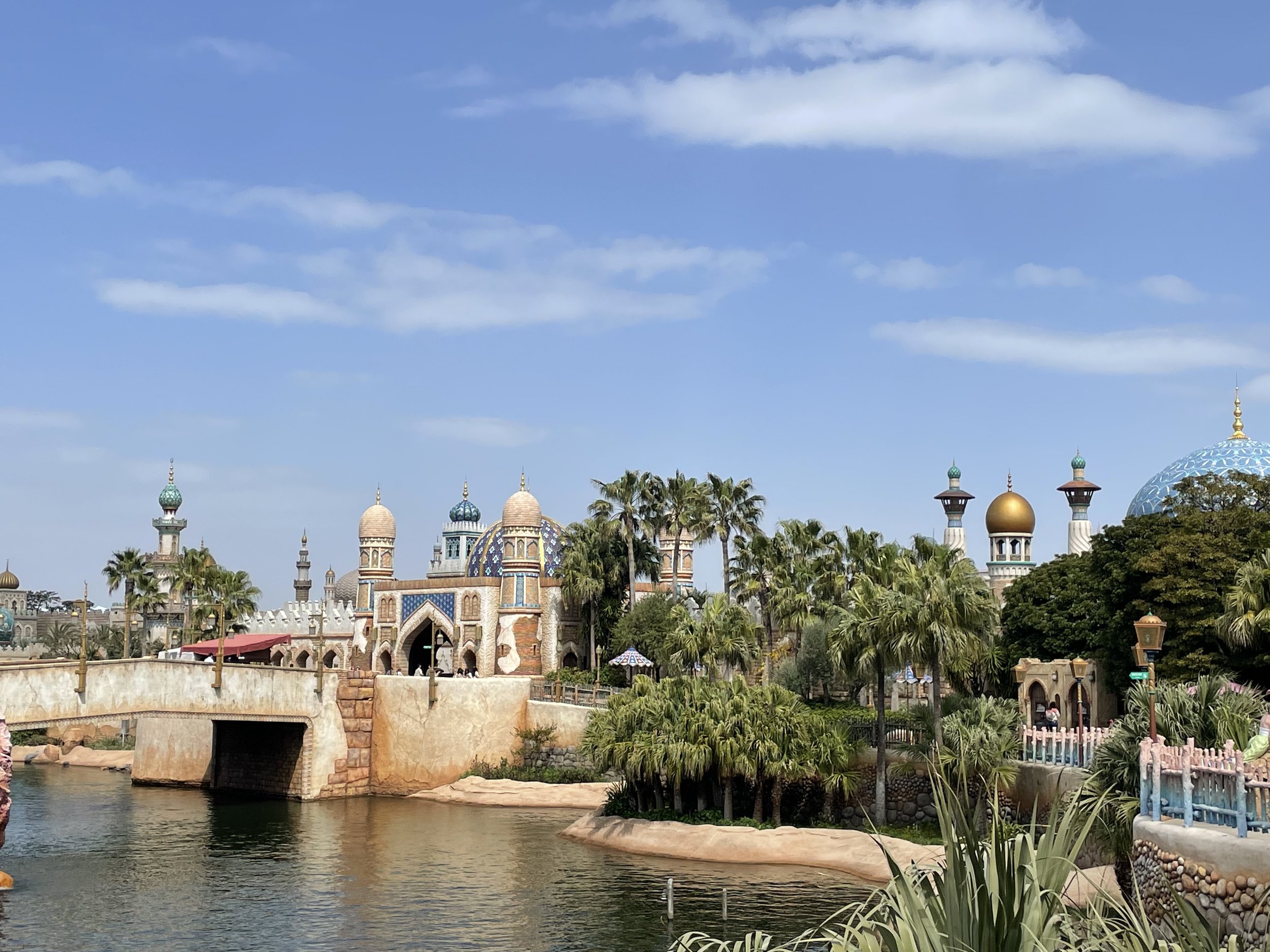Tokyo, Japan (2022)
Tokyo highlights
Asakusa
Minato and Ginza
Harajuku and Shibuya
Bunkyo and Yanaka
Akihabara
TeamLab Planets
Disney Sea
Why visit Tokyo?
For a mega city of contrasts - modern and traditional; chaotic and tranquil; commercial and spiritual.
Getting there and around
We flew from Cairns to Tokyo’s Narita airport with Jet Star at the start of April 2023. The flight took 7 hours.
At the time of our visit, Japan required all visitors to complete quarantine (showing proof of Covid vaccinations), immigration and customs forms online using the Visit Japan website.
On arrival at Narita airport it took us 90 minutes to get through the queues to show the immigration and customs officials our Visit Japan QR codes, and then to collect our luggage.
To get to our accommodation in Tokyo we took the Sky Access train from track 1 to Asakusa. Using our SUICA cards (see below) this cost £10 for adults, £5 for children). The Sky Access was an express train that stopped only at main stations and it took about an hour from Narita to Asakusa. Our apartment was adjacent to Asakusa station.
To get around Tokyo we walked, a lot. We also used public transport which was quick and efficient. Before leaving the airport we purchased SUICA cards which could be used seamlessly to pay for public transport operated by different companies in different cities across Japan. We topped up our SUICA cards with more credit when needed.
Over 8 days in Tokyo we loaded £130 of credit to our SUICA cards, which worked out at a per day cost of £5.66 per adult and £2.83 per child. This was very good value in our opinion for a reliable comprehensive public transport service.
The Tokyo subway network is extensive with many lines. But everything was clearly signposted in both Japanese and English, and stations are helpfully numbered as well as named so it’s easy to count the number of stops. Google map directions state not just which subway station but also which entrance to use, and it is a good idea to follow these instructions as the stations can be difficult to navigate once inside.
We enjoyed using Tokyo’s buses as they were always on time, clean, had seats, and let us see the city above ground. Often we found it much easier to get the bus than take the subway, because many subway stations were big and involved a lot of walking and stairs.
Accommodation
We stayed for 8 nights at the Mimaru Asakusa Station apartments. Mimaru apartments provide the privacy, amenities and space of self catering accommodation, but with the front desk and cleaning service of a hotel.
Our one room apartment (cost £236 per night) was small but perfectly formed with a double bed and a set of bunk beds. These bunk beds were better designed than most, with wide steps and big wooden sides for added safety. The room had a small kitchenette, dining table and bathroom. The wi-fi was free, very fast, and reliable.
We’d like to give a special shout out to the toilet with its heated seat and many buttons including privacy and wash functions!
The apartment building had a self-serve coin laundry (about £3 to wash and dry per load including detergent) and a Family Mart convenience store on the ground floor.
There was also a rooftop terrace with amazing views of the Sumida river and Skytree, the tallest tower in the world, and the Phillipe Starke designed Flame d’or of the Asahi beer headquarters, affectionately known as the ‘golden turd’. Golden poo is actually a Japanese symbol for good luck thanks to a word play - Kin no unko means both ‘good luck’ and ‘golden poo’ in Japanese.
We liked the Asakusa area a lot! It was a historic area that we found quite charming, and it was well connected to other parts of Tokyo by the Ginza (and Asakusa) subway lines and by bus.
Our star rating: 5
Our cost rating: 4
Asakusa
We started at the Asakusa visitor centre which has a free viewing deck on the 8th floor. From here we could look out over the Nakimise-dori (shopping street) and Senso-ji temple, and we could see the river and sky tree tower. We could even see our Mimaru apartment block!
We took the lift back down and walked along Nakimise-dori, browsing the shops. We loved the stalls selling different Japanese sweets, cakes and food, and all of the crafts, toys and souvenirs. The street was busy but not unbearably so, and we could walk and peruse at our own pace. We tried some of the street food for sale. The fresh strawberries were delicious!
At the end of Nakimise is Senso-ji, a Buddhist temple and the oldest in Tokyo, dating from 645AD.
At the temple were o-mikuji stalls, a popular activity when visiting shrines and temples in Japan. For a suggested donation of 100 yen, worshippers can draw at random a written fortune. This is done by gently shaking a metal canister, then choosing a number from the canister, and then opening the corresponding drawer of the number chosen to find the fortune paper.
For those who receive a bad fortune there is the option to fold up and tie the paper to some metal wire. This comes from a word play where the words for ‘pine tree’ and for the verb ‘to wait’ are the same in Japanese - matsu. Therefore by tying the fortune to a tree the bad luck will wait by the tree rather than attach itself to the bearer.
There was a temple garden with koi carp, statues and some cherry blossom trees. We were about a week late for peak cherry blossom season in Tokyo but some trees still had some blooms. We also saw a number of people dressed beautifully in Kimono.
We walked from Senso-ji for about 10 minutes to Kappabashi Dougu street which is home to many shops selling cooking equipment, knives, pottery and all the fake food that Tokyo restaurants display to entice customers inside. Along the way we wandered down quiet alleyways and soaked up the peaceful atmosphere of this area.
We then walked 5 minutes to the Rox shopping centre where we had lunch at Kura, a kaiten sushi train restaurant with a revolving carousel. This was a fun experience for the kids and our whole lunch including drinks cost just £20.
We ended our day in Asakusa by walking 10 minutes back towards the river for a stroll through Sumida park and a play at the playground. The playground was sea life themed with a giant whale shaped slide. The playground was quite dated and minimal but the obstacle course there kept the kids happy for half an hour.
Minato and Ginza
On our second day in Tokyo we took the subway to the Ginza area and visited the Ginza 6 shopping mall and then the flagship Uniqlo store which is 12 floors and was beautifully presented. Each floor had a different feel and theme. The views down to the street below were cool too!
The Ginza area was very different from Asakusa. It was much more commercial, consumerist, and modern; full of global brands, designer clothing stores, glitzy shopping malls and fast cars.
We then took the subway to Daimon station and walked through Shiba Park. We visited the Zojo-ji temple and saw the clothed and colourfully decorated jizo statues which are dedicated to lost babies and children. We saw a couple gently tending to one of the statues which was beautiful and moving.
We walked from the temple to Tokyo Tower. This iconic structure is striking in the flesh and incredibly photogenic.
From Tokyo Tower we took a bus past the Imperial Palace and Gardens, to Tokyo Station. Next to Tokyo Station we visited the Apple Store. Tokyo Station is a grand station with a domed ceiling.
In the basement is ‘Character Street’ which had lots of shops selling merchandise from TV programmes, games and anime. We treated the kids to some small Pokémon and Studio Ghibli toys and merchandise.
After visiting character street we tired from a long day of sight seeing and shopping, and were keen to escape the crowds and heat of the station.
To get back to the sanctuary of our apartment we went outside to seek fresh air and then walked to Nihombashi station which had a direct subway line back to Asakusa.
Harajuku and Shibuya
On our third day in Tokyo we visited the Harajuku and Shibuya areas.
We took the Ginza subway line to Omote-Sando station and then the Chiyoda line to Yoyogi-Koen station.
From there we walked through Yoyogi park, a large park adjacent to Meiji-Jingu shrine. The park was very busy with families enjoying a Sunday picnic under the last of the cherry blossom.
We saw a whole gang of people yo-yoing in unison. There were also many many people walking their small dogs. In some cases the dogs were dressed in fancy outfits, and some were being pushed in prams. It was quite a sight!
From the park we walked to the shops of Hirajuku. Lots of Tokyo residents and tourists visit this area on a Sunday. The area is popular with teenagers and we saw quite a few young people dressed up in different outfits.
We went into the Tokyu Plaza shopping mall to try and eat lunch at one of the restaurants but the queues were very long. We ate some snacks from our bag instead and later grabbed some lunch from a convenience store.
We walked on to Takeshita Street. This shopping street is home to a number of gachapon - shops where for a few hundred yen you can get randomly selected toys in a plastic capsule from machines.
Gachapon are very popular in Tokyo, particularly with young people. The range of toys available from the machines is amazing. Everything is themed and you can get cute animals, toy food, cars and transport, anime figures and even miniature homeware items like garden tools and BBQs!
There were also lots of shops selling novelty food such as rainbow coloured candy floss and ice creams and crepes in quirky flavours and shapes.
We shuffled along Takeshita Street with everyone else at a slow pace, much like you would at a street market. Harajuku was a fun place to visit but very crowded, overwhelming and intense!
From Hirajuku we took a quick 1 stop subway ride to Shibuya. Shibuya is full of skyscrapers and people! It’s famous for the ‘Shibuya Scramble’ crossing where thousands of people cross the road in a synchronised dance. We ate an early supper here, took photos of the famous zebra crossings, and crossed the road a few times ourselves.
We ended our day in Shibuya by visiting Shibuya Sky, a 230m high, 45 storey observation deck overlooking Shibuya Scramble. We booked our tickets online 2 months ahead and paid £35 for the 4 of us. We chose a 17.40-18.00 time slot which meant we got to visit during sunset and stayed until after the sun had gone down.
Shibuya Sky was sold out when we visited and it took us about 20 minutes to queue for the lifts up to the observation deck. There were lots of people, some queuing to get photos from the best spots, but it wasn’t difficult to find space to look out.
Tokyo is a mega city, and from Shibuya Sky it seemed never ending to us, spreading out as far as we could see.
We had wonderful views of Tokyo Tower, the Sky Tree, Shinjuku, Hirajuku and Yoyogi Park, and in the distance we could see Tokyo Bay, and Mount Fuji against the setting sun.
We also had a great birds eye view of the thousands of people crossing Shibuya Scramble below.
It was an easy journey back to our apartment in Asakusa, as Shibuya and Asakusa are at either end of the same Ginza subway line.
Bunkyo and Yanaka
Mal and the kids had some chill out time at the apartment on the morning of day 4, while Harriet visited the Bunkyo and the Yanaka areas. These areas were just a short bus journey from our apartment.
Bunkyo and Yanaka are older parts of Tokyo with a slow and gentle pace, and architecture that is more human in scale than areas such as Ginza or Shibuya. There were charming winding alleys, town houses, cafes and shops.
Nezu Shrine is home to an azalea flower garden which was in full bloom at the time of our trip to Tokyo and is open to the public during the Bunkyo Azalea Festival.
The garden was stunning, and not too crowded first thing in the morning. It was a beautiful place to wander through and photograph.
Akihabara
In the afternoon we all headed to Akihabara. This was a quick and easy journey via the Ginza subway line to Suehirocho station.
Akihabara is known as ‘electric town’ and is full of gachapon and merchandise shops, pachinko gambling parlours, and electrical shops. It’s a bit like Tottenham Court Road in London but on acid!
The reason for our visit was to go to the retro arcade gaming centres. First we went to Taito Station which seemed to specialise in music and dance games. Then we visited GiGo 3 which had retro games such as Mario bros and pac man; and racing games.
We also had a look around Super Potato which stocked retro games consoles and had a huge selection of vintage video games, and the Mandarake Complex which sold anime and TV merchandise.
The game centres were huge with multiple floors, noisy and cramped. But we had so much fun playing games with the kids and showing them older games from our childhood. The arcade games only cost 100 yen (about 50p) per play so it was a relatively low cost but fun family activity. It was a fantastic place to visit for fans of video games, and Japanese TV, film and anime.
TeamLab Planets
TeamLab is an international art collective founded in 2001 and has exhibitions all over the world.
TeamLab’s Planets exhibition is a museum where visitors can walk barefoot and become part of the art. The exhibition makes use of digital projections, mirrors, sounds and light to create mesmerising infinite spaces. We visited on day 5 of our trip to Tokyo.
There were two paths to follow, the garden path and the water path.
The water path included walking uphill through a flowing river to a waterfall; and wading through water among colourful koi carp and cherry blossoms projected onto the water all around us. Free lockers were available to store shoes and socks, and towels were provided to dry our feet.
In Soft Black Hole we made our way across bean bags, collapsing when other people moved in the space; this exhibit was about how we and others influence the environment and people around us.
The Infinite Crystal Universe was a massive room filled with mirrors and hanging LED lights that changed colour. The infinite lights and space around were constantly changing, as the artwork evolved with us in it.
The Expanding Three-Dimensional Existence in Transforming Space exhibit was full of giant spheres of floating light. The light behaved as a group. When a sphere was impacted, all the spheres changed color, and the space between the spheres shifted.
In the Falling Universe of Flowers we laid down and watched seasonal flowers bloom, change and die. The artwork floating above us was being rendered in real time as we watched.
Finally, we followed the Garden Path and in the Floating Flower Garden we sat below thousands of hanging orchids which rose and fell and were reflected in mirrors. The bright natural light in here was gorgeous.
To reach TeamLab we took the subway to Ginza and then a bus. The whole journey took us about 45 minutes.
We booked our tickets online and they cost £20 for adults and £10 for children. The museum is very popular and tickets sell out in advance. It was busy when we visited but as tickets are limited and we went on a week day it wasn’t unbearably crowded.
This incredible immersive experience was so much fun and was absolutely worth both the journey there and the ticket price.
Disney Sea
Our penultimate day in Tokyo was a much needed unscheduled day where we caught up on chores such as doing laundry and writing our journals and blogs. We also used the time to pack our bags ready for moving on from Tokyo.
On our seventh and last day in Tokyo we visited Disney Sea. We booked our tickets online 2 months ahead. They cost £130 for the 4 of us to visit on a weekday. Prices have since increased slightly.
We took the Ginza line subway to Kyobashi Station, walked 5 minutes to Tokyo station, and then took the Keiyo Line to Maihama station. From there we bought tickets to ride the Disney monorail to the park. Despite the number of transfers it was a smooth and quick journey there and back.
We took things easy - no very early start, rope drops, or trying to tick everything off. Instead we focused on taking in the atmosphere and enjoying the theming of this unique park. We got there at 9.15am just after opening and found the park to be pleasantly uncrowded.
All of the different port areas were beautifully designed and we particularly loved the Arabian Coast and Mermaid Lagoon.
We decided not to do any thrill rides, focusing only on gentle kid friendly rides. We did all of the rides at Mermaid Lagoon and Arabian Coast, plus Aquatopia, Nemo and Friends Sea Rider, Turtle Talk with Crush, and 20,000 Leagues Under the Sea. Our favourite rides were Sinbad’s Storybook Voyage, Aquatopia, and Nemo and Friends.
We only had a couple of little gripes which were that we didn’t get tickets in the lottery for the Big Band Show, the Venetian gondolas and fortress explorations were suspended during our visit, and Turtle Talk was (understandably) in Japanese and incomprehensible to non-speakers. We didn’t even try to get on the Toy Mania ride as wait times were over an hour.
However, the wait times for everything that we did do were very reasonable. Usually 15-20 minutes and never more than 30. Lunch at the Cape Cod Cook Off was nothing special but we loved trying the different popcorn flavours at this park including soy sauce, milk chocolate, and caramel. All of the cast members (staff) were super friendly and helpful too. We had a fantastic time.
Final thoughts
For their weekly journal entries the kids created word clouds to describe Tokyo. Their top words were: awesome, fun, delicious, gigantic and overwhelming. We think they’ve captured the city well!
Tokyo is a fun place to visit with loads to see and do. It’s a city of contrasts, with both chaotic intense places full of quirky cool things, and calm contemplative spots with serene beauty. The retail and food scene is amazing with a huge diversity of shops and restaurants for every budget.
We loved how easy it was to get around, how organised everything was, and how kind and polite all of the people were. Tokyo is a stunning global city that really impressed us, and one that we would love to revisit one day.
Wild Rumpus Travel copyright © 2019 - 2024 all rights reserved.

